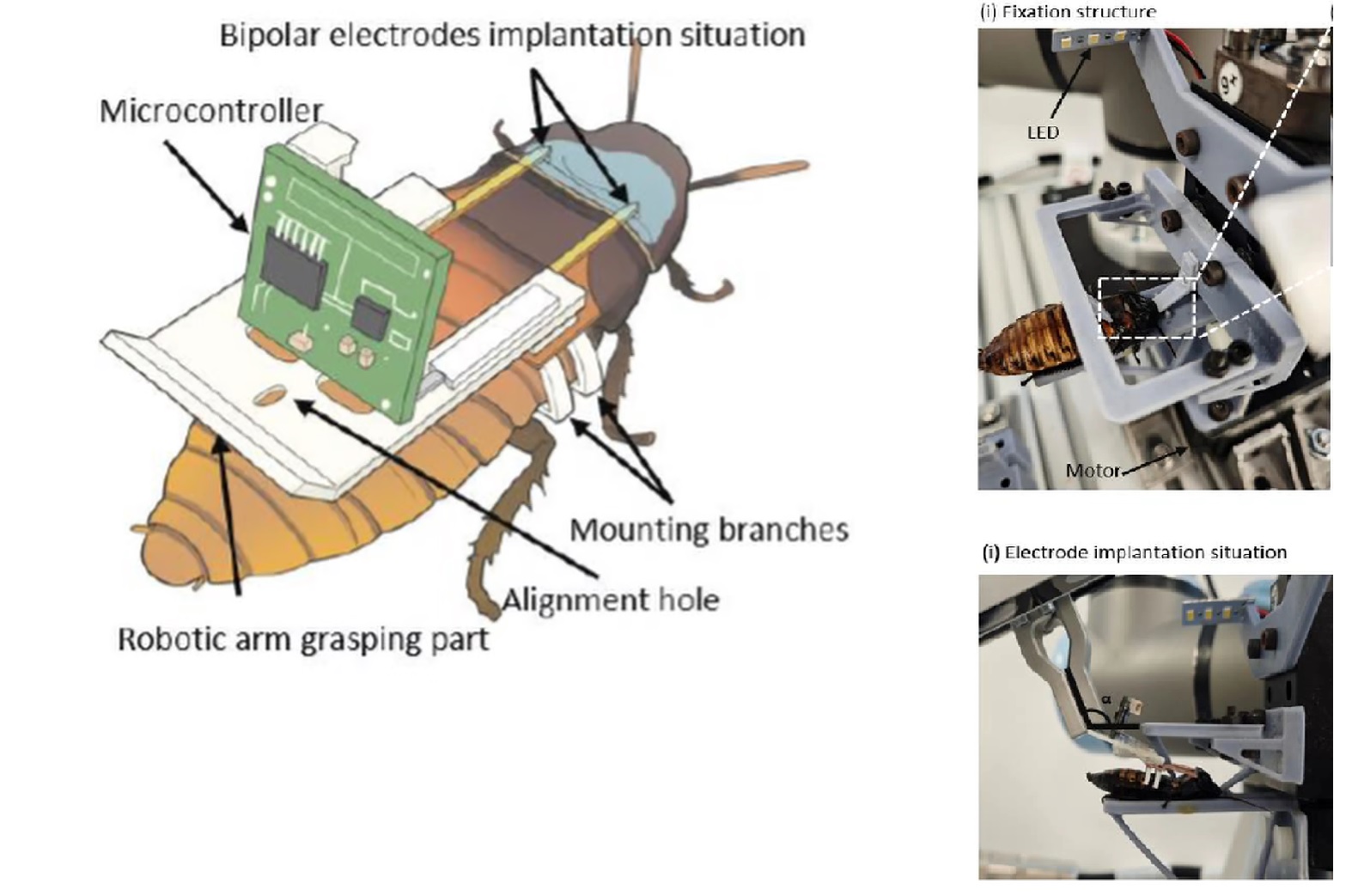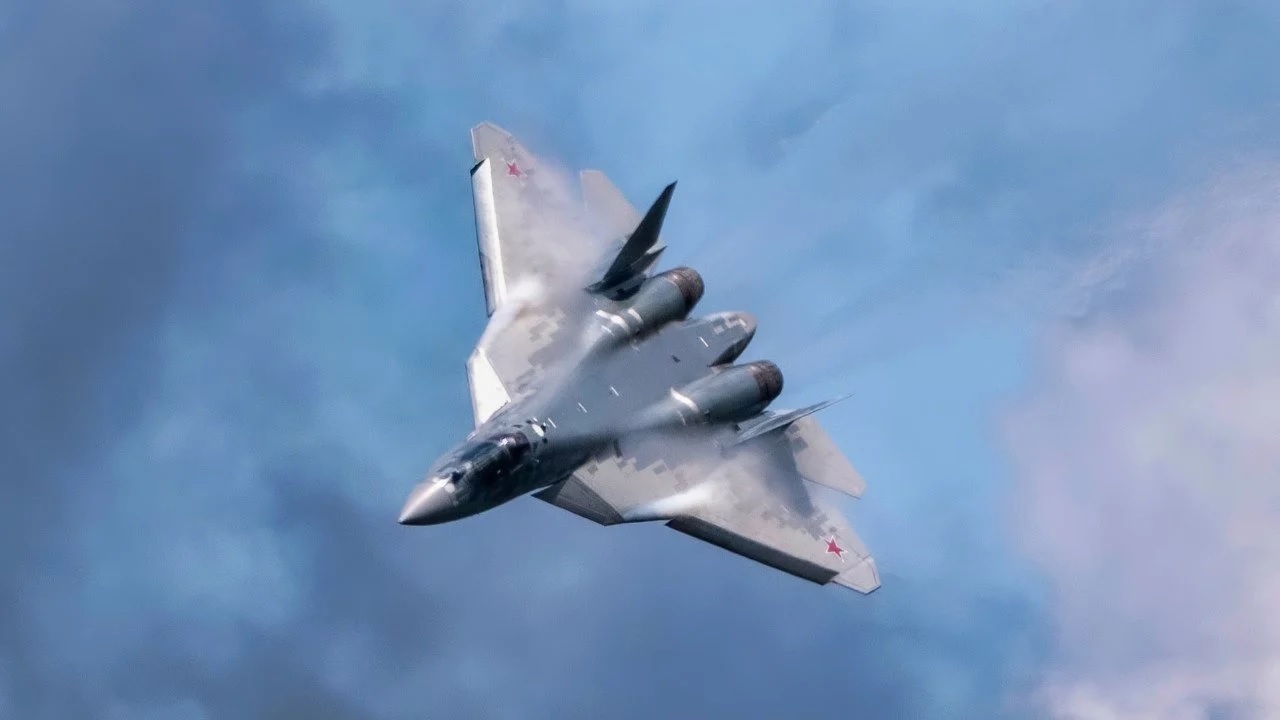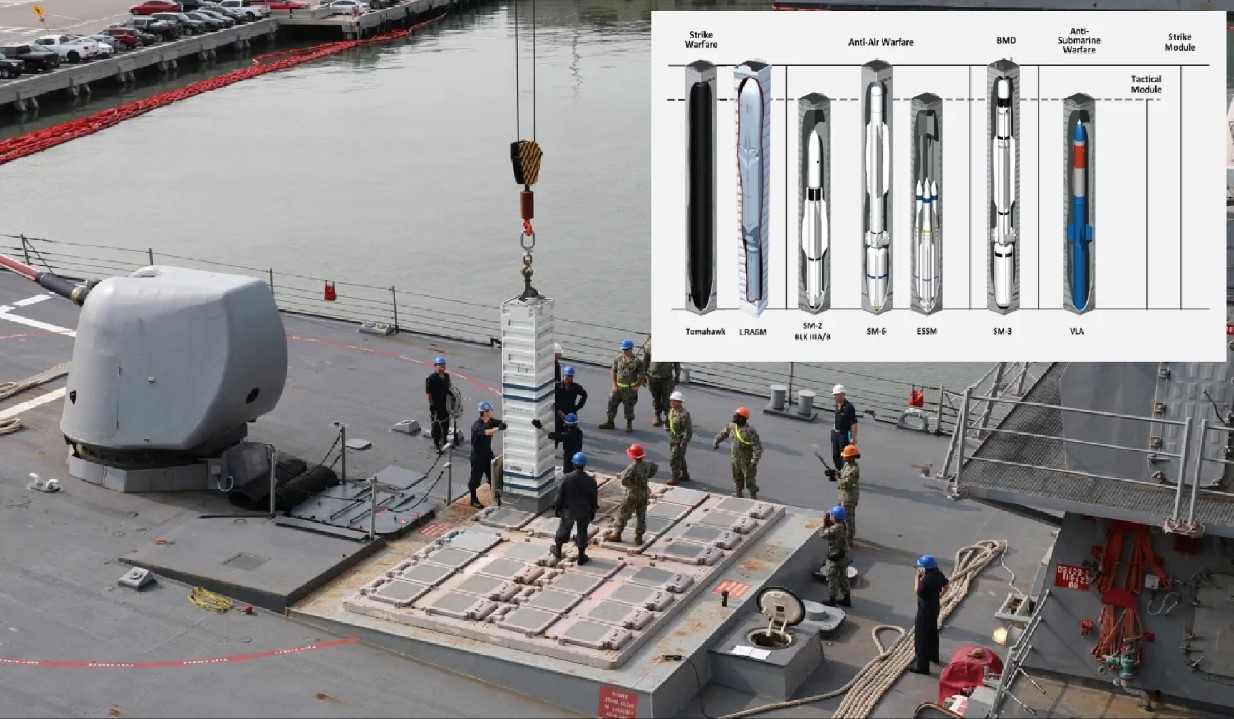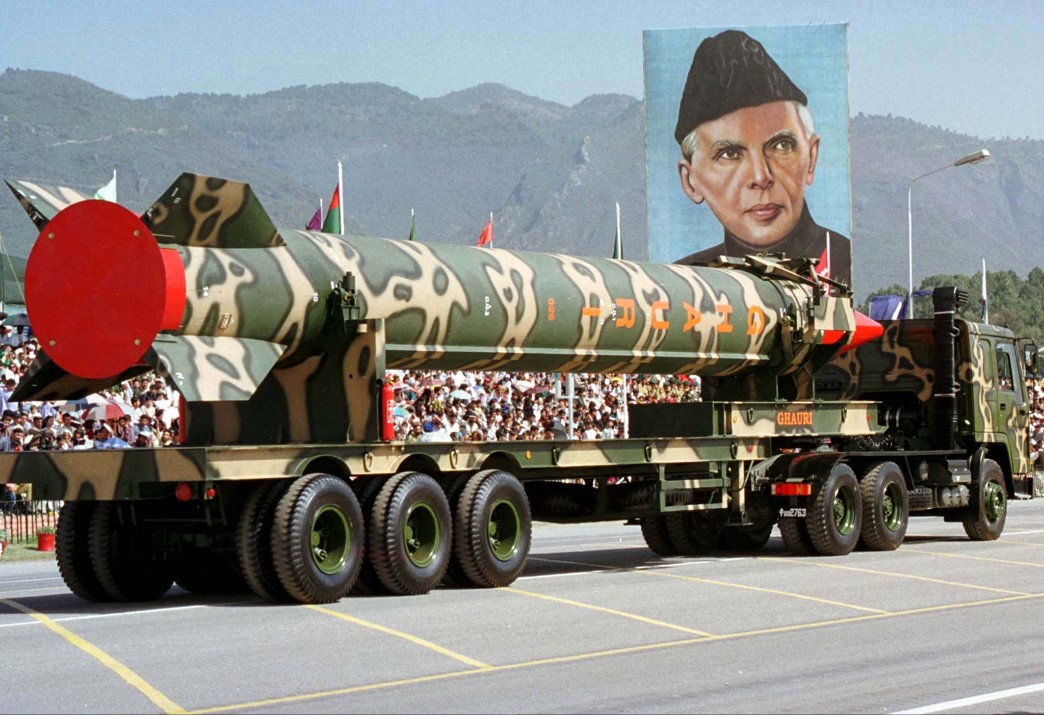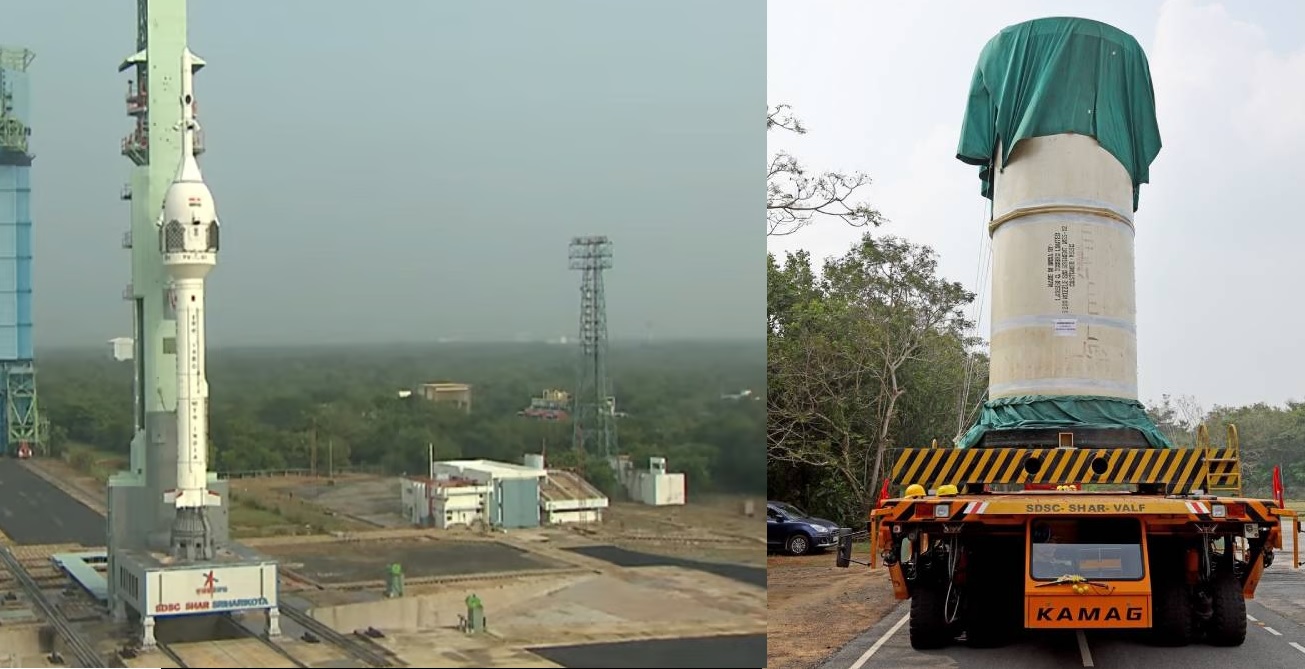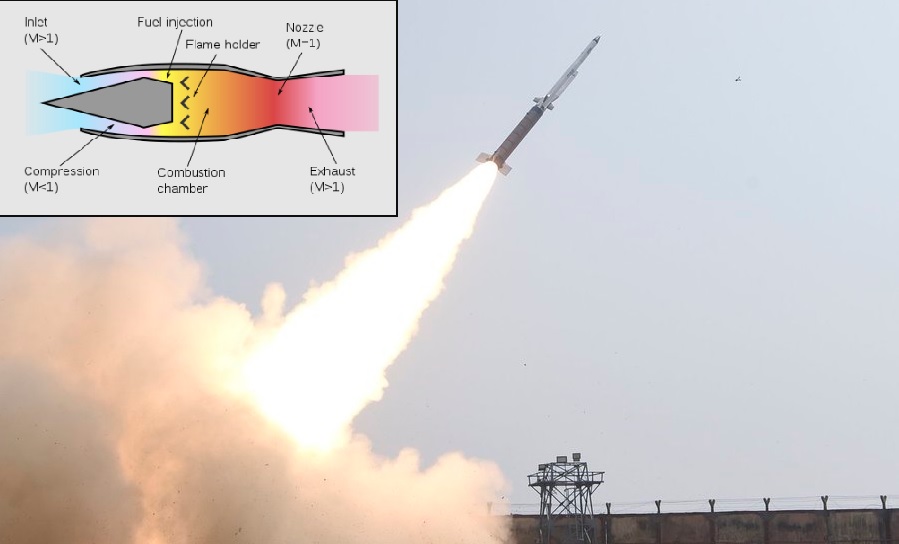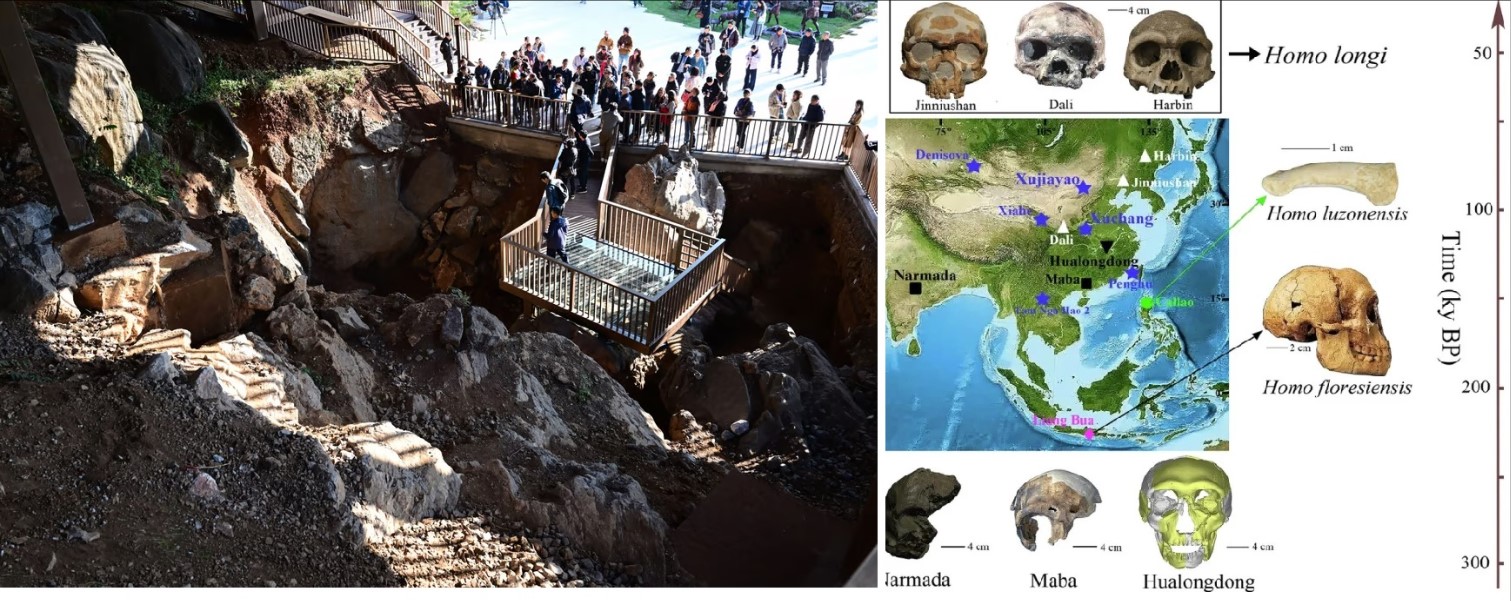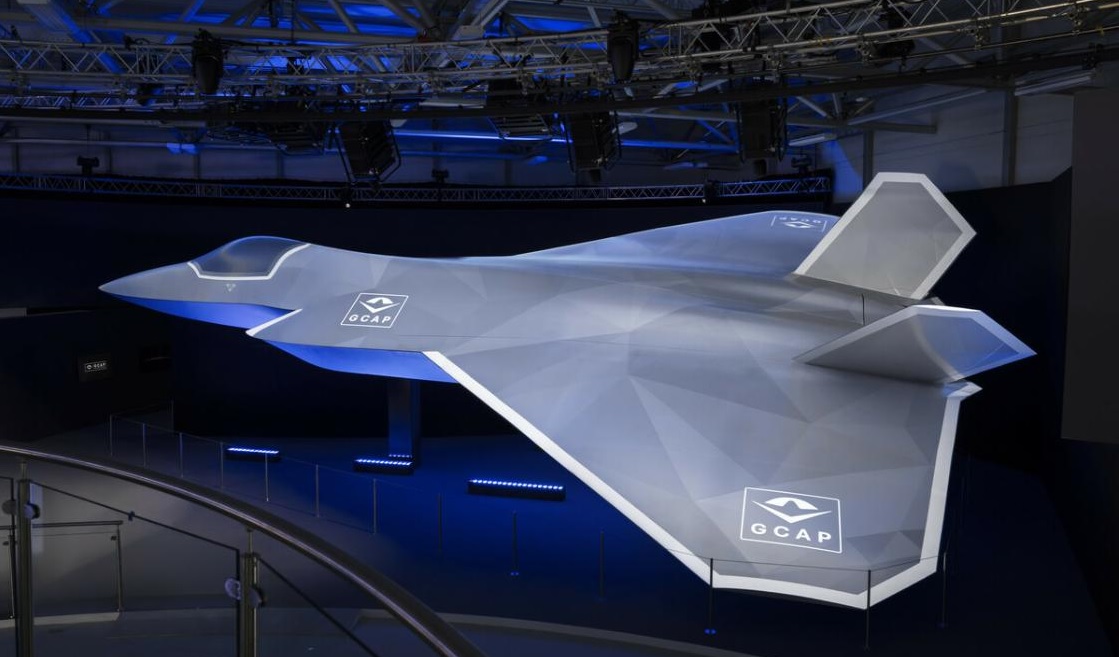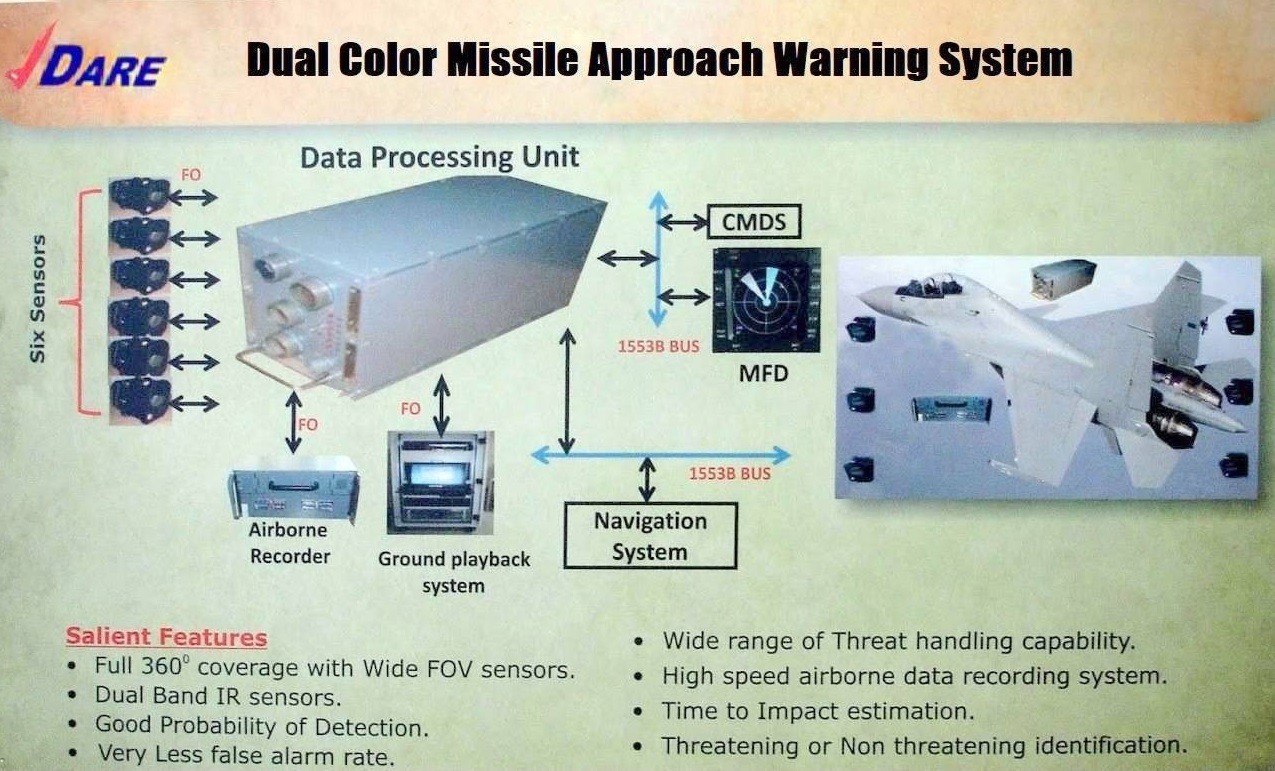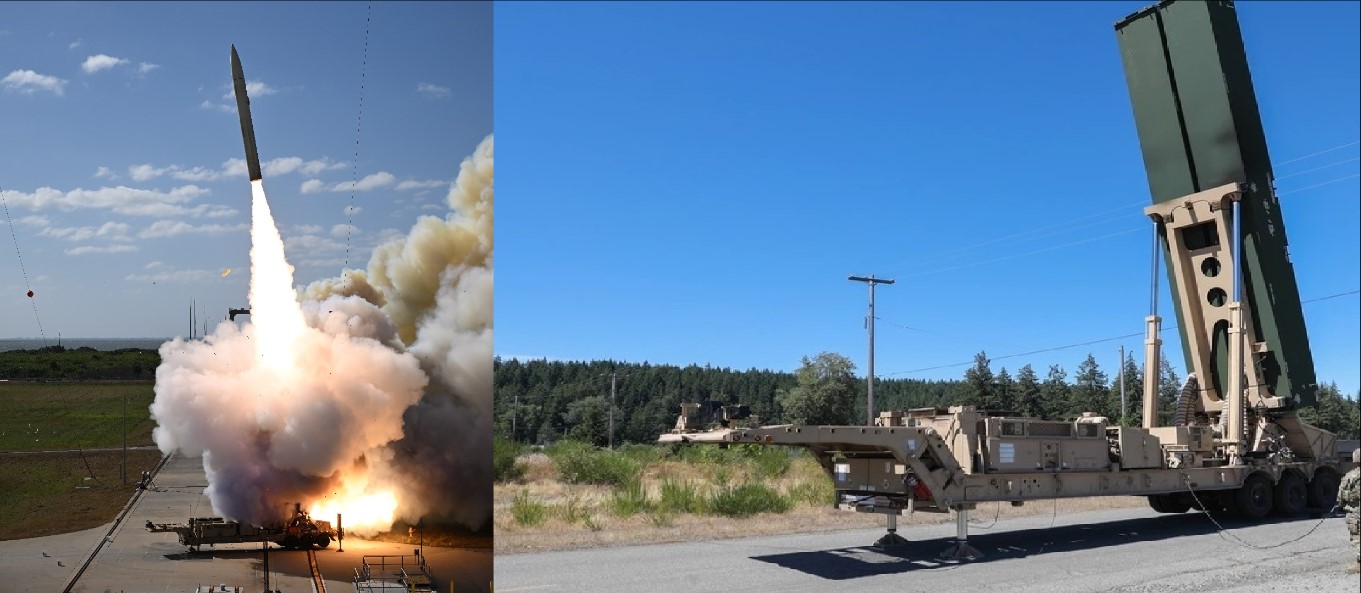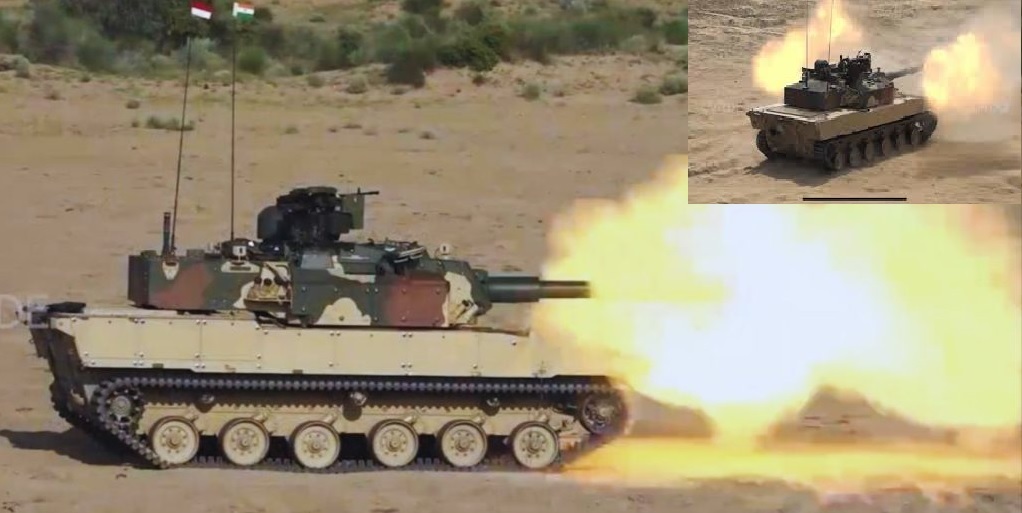Science
The Large Hadron Collider (LHC), humanity's most ambitious scientific experiment, has once again pushed the boundaries of our understanding of the universe. Researchers working with the ALICE detector at the LHC have identified evidence of the heaviest antimatter particle ever observed: antihyperhelium-4. This breakthrough provides a window into the universe's infancy and offers tantalizing clues about the enduring mystery of matter-antimatter asymmetry. The antihyperhelium-4 particle is the antimatter counterpart of hyperhelium-4, a hypernucleus made of protons, neutrons, and hyperons—particles that include a strange quark. This exotic particle emerged from quark-gluon plasma, a state of matter that mimics the conditions of the cosmos moments after the Big Bang. Such plasma is generated when heavy ions, like lead nuclei, are smashed together at near-light speeds in the LHC. Recreating the Early Universe The LHC, a 17-mile-long particle accelerator beneath the Alps near Geneva, Switzerland, specializes in recreating extreme conditions reminiscent of the universe's birth. The high-energy collisions within its detectors produce fleeting and exotic particles, including hypernuclei, which are rarely found in nature. These hypernuclei are invaluable for understanding the primordial matter that once filled the cosmos. Antimatter particles like antihyperhelium-4 are particularly significant because of their rarity and the role they play in unraveling the puzzle of why the observable universe is dominated by matter. Scientists believe that matter and antimatter were created in equal amounts during the Big Bang. However, when they come into contact, they annihilate each other, converting their mass into energy. The lingering imbalance that allowed matter to persist remains one of physics' greatest unsolved mysteries. ALICE Detector and Machine Learning Breakthrough ALICE (A Large Ion Collider Experiment) is one of the LHC’s nine detectors, uniquely designed for studying quark-gluon plasma. The discovery of antihyperhelium-4 was achieved by analyzing data from lead-lead collisions conducted in 2018. Scientists detected the particle through its decay signature into other particles, using advanced machine-learning algorithms that outperformed traditional search methods. The team's analysis also provided precise measurements of antihyperhelium-4’s mass, confirming its consistency with theoretical predictions. Furthermore, the amounts of antihyperhelium-4 and other antimatter hypernuclei produced in the collisions were found to match their matter counterparts, reinforcing the concept that matter and antimatter are generated symmetrically in these conditions. Implications for Cosmic Mysteries This discovery builds on previous findings, including the detection of lighter antimatter particles like antihypertriton and antihyperhydrogen-4. While these results don’t yet explain the universe’s matter dominance, they refine our understanding of antimatter production and decay, offering critical insights into the early universe's behavior. Looking forward, physicists aim to use antihyperhelium-4 and other antimatter particles as tools to probe the forces and symmetries governing our cosmos. By studying their properties and interactions, scientists hope to inch closer to solving the enigma of matter-antimatter asymmetry—a breakthrough that could transform our grasp of the universe's origins. This remarkable discovery underscores the LHC’s unparalleled role in modern physics. By recreating the primordial conditions of the universe, it continues to shed light on some of the most profound questions in science, bringing us closer to understanding the very fabric of reality.
Read More → Posted on 2024-12-14 15:22:42Space & Technology
Imagine a world where swarms of tiny, cybernetically enhanced cockroaches scuttle into disaster zones, inspecting hazardous areas or carrying out delicate search-and-rescue missions. This is no longer the realm of science fiction. Researchers have developed a groundbreaking robotic system in China capable of mass-producing cyborg cockroaches, blending biology and technology in ways that could reshape how we approach critical tasks like disaster management and factory inspections. At the heart of this innovation is a fully automated process designed to streamline the creation of "insect-computer hybrids." By integrating advanced robotics, deep learning-based computer vision, and precision engineering, the process now produces one cyborg cockroach every 68 seconds. The research, spearheaded by Professor Hirotaka Sato of Nanyang Technological University and first author Lin Qifeng from China, represents a significant leap in robotics and bioengineering. The Anatomy of a Cyborg Cockroach These hybrid insects are equipped with tiny electronic "backpacks" that allow researchers to remotely control their movements. The cockroach of choice for these experiments is the Madagascar hissing cockroach, renowned for its durability and robust pronotum—a hard plate on its back that serves as an ideal anchor for electronic components. To create these cyborgs, the process begins with anaesthetising the insects using carbon dioxide. The cockroaches are then positioned on a platform where metal rods secure their bodies. Using a robotic arm guided by a deep-learning vision system, the electronics are precisely implanted onto the insects' backs. Specialised mounting branches ensure the backpack remains stable during operation. What Can a Cyborg Cockroach Do? These electronically enhanced cockroaches can be steered and decelerated through remote stimulation. Extensive testing has demonstrated their reliability. For instance: Cyborg cockroaches showed precise steering control of over 70 degrees within 0.4 seconds of stimulation. Their deceleration capabilities were measured at 68.2%, ensuring controlled movement in tight spaces. Outdoor trials further highlighted their agility, with four hybrid cockroaches navigating an obstacle-filled 4-square-metre area, covering 80% of it within 10 minutes. These capabilities make them ideal candidates for applications in challenging environments, such as navigating uneven terrain or accessing confined spaces that are inaccessible to larger robots or humans. The Factory of the Future The researchers envision large-scale factories dedicated to the mass production of these cyborg insects. Such facilities could meet the demand for rapid deployment in various scenarios. The ability to automate the assembly process ensures consistency and eliminates the labor-intensive nature of manual implantation, making it scalable for industrial needs. Future iterations of the electronic backpacks could incorporate additional sensors, enhancing the cockroaches' ability to detect gas leaks, measure temperature, or even locate survivors in collapsed buildings. The integration of autonomous functionality is also on the horizon, enabling hundreds of cyborg cockroaches to work together seamlessly. Potential Applications The potential uses for these cybernetic insects span multiple industries: Search and Rescue: In disaster scenarios, these cockroaches could be sent into rubble to locate trapped individuals. Factory Inspections: Their small size and maneuverability make them perfect for inspecting machinery and identifying hard-to-reach faults. Scientific Exploration: Cyborg insects could gather environmental data in ecosystems or inspect spaces humans cannot access. Agricultural Monitoring: Equipped with specialized sensors, they could assess crop health or detect pest outbreaks. Challenges Ahead While the advancements are promising, the researchers note that challenges remain. Achieving true autonomy for these hybrid insects—allowing them to function without human intervention—is a complex hurdle. Additionally, ethical concerns surrounding the use of live insects in robotics persist, requiring transparent guidelines and societal dialogue. The Future of Cyborg Insects This innovation symbolizes a profound intersection between biology and robotics, opening doors to a future where technology and nature collaborate in unprecedented ways. From inspecting industrial sites to saving lives in disaster zones, these tiny, cybernetic helpers could become indispensable tools in a variety of fields. As the technology matures, we may one day witness swarms of these remarkable creatures quietly revolutionizing the way we solve some of humanity’s most pressing challenges.
Read More → Posted on 2024-12-14 15:08:30India
India’s defense modernization efforts often require a delicate balancing act between indigenous development and strategic procurement. This challenge was eloquently addressed by Major General S.B. Asthana, who recently highlighted the "30/60/10 rule" as a guiding principle for maintaining a well-rounded military arsenal. Speaking on the potential acquisition of Russia’s Su-57 fifth-generation stealth fighter, Maj Gen Asthana underscored the need for a pragmatic approach to equipping the Indian Armed Forces. The "30/60/10 rule" advocates that a military force's inventory should ideally consist of 30% cutting-edge systems, 60% current-generation equipment, and 10% legacy or obsolete inventory. This framework ensures readiness for contemporary conflicts while laying the groundwork for long-term modernization. Applying this principle, the acquisition of advanced platforms like the Su-57 could complement India’s ongoing efforts to build a robust domestic defense ecosystem under the Aatmanirbhar Bharat (Self-Reliant India) initiative. The Su-57, developed by Russia’s Sukhoi Corporation, is one of the most advanced stealth fighters in the world, designed to rival the American F-35 and Chinese J-20. With its radar-absorbing materials, supercruise capability (sustained supersonic flight without afterburners), and next-generation avionics, the Su-57 represents a significant leap in aerial warfare. The aircraft is powered by advanced Izdeliye 30 engines, enabling a top speed of approximately Mach 2 and an operational range of over 3,500 kilometers. Its avionics suite integrates artificial intelligence for combat assistance, target tracking, and threat detection, while its internal weapons bays ensure minimal radar cross-section during operations. Maj Gen Asthana emphasized the operational advantages of acquiring such ready-to-deploy systems. Unlike indigenous projects like the Tejas Light Combat Aircraft or the AMCA program, which require time to mature, a proven platform like the Su-57 could deliver immediate combat capabilities. The Su-57’s ability to penetrate contested airspace and deliver precision strikes would enhance India's deterrence posture, particularly in the face of rising challenges from neighboring adversaries equipped with their own fifth-generation fighters. Despite these advantages, the general also highlighted the complexities surrounding such a procurement. Strategic acquisitions must align with India’s defense priorities, financial constraints, and technological ambitions. The high cost of fifth-generation fighters, coupled with the need for long-term sustainment and upgrades, can strain resources earmarked for indigenous development. However, a collaborative approach—such as technology transfer agreements or joint manufacturing—could bridge this gap while bolstering India’s domestic aerospace industry. India's broader context of defense modernization further enriches this discussion. While the nation has made significant strides in indigenous capabilities, including the development of advanced radars, missiles, and electronic warfare systems, there are still gaps that necessitate external procurement. Maj Gen Asthana aptly noted that while self-reliance is a noble goal, operational imperatives sometimes require immediate solutions. “We cannot compromise on readiness,” he stressed, “even as we strive to achieve technological independence.” Ultimately, the decision to procure the Su-57 would hinge on its compatibility with India’s operational doctrine and the geopolitical implications of deepening ties with Russia. In an era of rapidly evolving threats, ensuring a blend of cutting-edge and reliable technology becomes crucial for maintaining India’s strategic edge. As Maj Gen Asthana aptly put it, balancing immediate needs with long-term aspirations remains the cornerstone of India’s defense strategy.
Read More → Posted on 2024-12-14 15:02:49World
Lockheed Martin Rotary and Mission Systems, headquartered in Moorestown, New Jersey, has been awarded a $73.1 million contract modification to produce additional MK 41 Vertical Launching System (VLS) modules and ancillary equipment. This development underscores the U.S. Navy’s dedication to enhancing its shipbuilding initiatives and maintaining a cutting-edge naval combat capability. The project is slated for completion by December 2026 and will support the Navy’s expanding fleet with state-of-the-art missile launching technology. The MK 41 VLS: A Cornerstone of Naval Warfare The MK 41 VLS is a multi-mission, modular missile launching system integral to modern naval combat operations. Known for its versatility, the MK 41 serves as the backbone of the Navy’s offensive and defensive capabilities, seamlessly integrating with weapon control systems and missiles across a range of combat domains. These include: Anti-air warfare Anti-surface warfare Anti-submarine warfare Ballistic missile defense Land attack One of the system’s standout features is its ability to accommodate any missile in any cell, offering unparalleled flexibility and rapid response capabilities in mission-critical scenarios. Specifications and Configurations The MK 41 employs a modular design, with each module containing eight launch cells. Configurations are adaptable to meet varying mission demands, ranging from a single eight-cell module to a massive 16-module configuration with 122 cells. System Lengths: Strike Length: At approximately 25 feet (7.6 meters), this configuration supports larger missiles, such as those for ballistic missile defense and long-range strikes. Tactical Length: At 22 feet (6.7 meters), this configuration accommodates most missile types but excludes long-range Tomahawk cruise missiles and other ballistic missile defense systems. Deployed in 13 configurations worldwide, the MK 41 integrates seamlessly across various ship classes, enhancing combat readiness for diverse mission profiles. Strategic Importance The MK 41 VLS is more than a missile launcher—it is a force multiplier. By enabling multi-mission capabilities, the system ensures naval vessels can adapt to the dynamic nature of modern threats. Its robust design and operational flexibility make it indispensable for ship classes such as destroyers, cruisers, and even allied navies worldwide. Distribution and Funding The contract will distribute work across several U.S. locations, including Moorestown, New Jersey (31%); Indianapolis, Indiana (27%); and smaller contributions from Michigan, New York, Missouri, California, and Virginia. The funding primarily draws from the fiscal 2025 shipbuilding and conversion budget, with smaller allocations from fiscal 2023 and 2024 funds. Enhancing Combat Readiness This latest contract modification highlights the Navy’s commitment to strengthening its fleet’s operational flexibility and combat capabilities. With the MK 41 VLS, U.S. ships are better equipped to counter a spectrum of threats, from missile attacks to undersea incursions. The system’s adaptability ensures it remains a cornerstone of naval warfare technology for years to come. The $73.1 million investment reaffirms Lockheed Martin’s role as a critical partner in advancing naval combat systems, fortifying the Navy’s position as a global maritime power.
Read More → Posted on 2024-12-14 14:59:08World
The negotiations between Pakistan and China, which once appeared to be a cornerstone of strategic partnership in South Asia, have encountered a significant stumbling block. At the center of this dispute lies Pakistan’s ambitious demand for nuclear second-strike capabilities from China, using the leverage of Gwadar Port—a key node in the China-Pakistan Economic Corridor (CPEC). This impasse sheds light on the evolving dynamics and cracks in what has traditionally been considered a robust bilateral alliance. Pakistan's Strategic Gamble Pakistan’s demand for second-strike capabilities reflects its aspiration to strengthen its nuclear deterrence in a region fraught with volatility. Second-strike capability, which includes assets such as nuclear-powered ballistic missile submarines (SSBNs), is considered a cornerstone of modern nuclear strategy. By ensuring the ability to retaliate even after a devastating first strike, such capabilities provide a credible deterrent to adversaries. However, these technologies are highly sensitive, involving advanced propulsion systems, missile-launch platforms, and stealth operations, which China has so far refused to share. Reports indicate that Pakistan had hoped to secure these capabilities by allowing China to enhance its military presence at Gwadar Port. Strategically located near the Strait of Hormuz, Gwadar offers a vantage point for projecting naval power in the Arabian Sea and securing critical trade routes. However, China’s unwillingness to equip Pakistan with such advanced nuclear technology underscores the inherent risks and strategic calculations involved. Gwadar Port: From Strategic Asset to Diplomatic Stalemate Gwadar Port has been a centerpiece of the CPEC, symbolizing the deep economic and strategic ties between the two nations. Initially envisioned as a game-changer for Pakistan’s economy, the port was also seen as a strategic outpost for China’s Belt and Road Initiative (BRI), providing a direct route to the Indian Ocean. In recent years, however, the port has become a flashpoint for tensions. Local unrest, militant attacks targeting Chinese workers, and accusations of exploitation have tarnished Gwadar’s potential as a symbol of cooperation. China’s insistence on establishing a military base at Gwadar, as part of its broader plan to secure BRI investments, has complicated negotiations. While Pakistan may have initially entertained the idea, it has grown wary of becoming over-dependent on Beijing and risking its sovereignty. These divergent priorities have further strained the talks, with each side reluctant to fully concede to the other’s demands. The Broader Context: Strains in Sino-Pakistani Relations The current impasse comes at a challenging time for Pakistan, which faces economic turmoil, mounting debt, and internal political instability. Despite its traditional reliance on Chinese investments, particularly through CPEC, Islamabad finds itself grappling with diminishing returns and increasing resentment among its population over perceived Chinese dominance. China, for its part, has grown increasingly frustrated with the security situation in Pakistan. Attacks on Chinese nationals and infrastructure projects have eroded trust, prompting Beijing to demand enhanced security measures and tighter control over CPEC operations. These security concerns, coupled with Pakistan’s financial instability, have made China cautious about further deepening its strategic commitments. Strategic and Geopolitical Implications The stalled talks not only highlight the vulnerabilities in the China-Pakistan relationship but also carry broader implications for regional geopolitics. A failure to resolve these issues could weaken China’s foothold in the Arabian Sea, complicating its ambitions for naval dominance and energy security. For Pakistan, the inability to secure nuclear second-strike capabilities from China could force it to explore other options, potentially heightening tensions in South Asia. The situation also provides an opportunity for other regional and global players to recalibrate their strategies. For instance, India, a long-time adversary of Pakistan, will be closely monitoring these developments, as they could signal shifts in Pakistan’s strategic posture. Similarly, the United States may view the rift as a chance to counterbalance China’s influence in the region by engaging more actively with Islamabad. Conclusion What was once a seemingly unshakeable alliance between China and Pakistan now appears to be under strain, with Gwadar Port at the center of a high-stakes negotiation. Pakistan’s demand for nuclear second-strike capabilities, coupled with China’s strategic and security concerns, has created a deadlock that neither side seems willing to break. As these tensions unfold, the outcome could reshape not just bilateral relations but the strategic dynamics of South Asia and the Indian Ocean region.
Read More → Posted on 2024-12-14 13:50:16World
Tensions are simmering between Pakistan and China as reports suggest that the Pakistan Army has made an extraordinary demand: providing second-strike nuclear capability in return for enhanced Chinese control of the strategically significant Gwadar Port. This bold move has reportedly created friction in the "all-weather" China-Pakistan partnership. Second-strike nuclear capability, which allows a country to retaliate even after suffering a nuclear attack, is pivotal in nuclear deterrence. Pakistan's current nuclear triad—comprising land, air, and sea-based delivery systems—remains constrained compared to more advanced powers like India, which has developed nuclear-powered ballistic missile submarines (SSBNs) such as the INS Arihant. While Pakistan has made strides with weapons like the Babar-3 submarine-launched cruise missile (450 km range), its reliance on conventional submarines for nuclear delivery undermines its second-strike credibility. China's Perspective and Strategic Considerations China, heavily invested in Gwadar under its Belt and Road Initiative (BRI), views the port as a linchpin in its maritime strategy and a potential site for future naval operations. Despite Beijing's interest in Gwadar, the demand for second-strike nuclear technology is seen as a geopolitical minefield. Providing such capabilities to Pakistan could exacerbate regional instability, especially with India's increasing nuclear readiness and the tense security environment in South Asia. Beijing is already frustrated with Pakistan over persistent security threats to Chinese workers and investments in the region. Attacks on China-Pakistan Economic Corridor (CPEC) projects have strained the relationship, prompting China to push Pakistan for stronger counter-terrorism cooperation and improved security measures. While Beijing has even proposed joint security operations at CPEC sites, such demands highlight a deeper Chinese unease over Pakistan's political instability and its potential to derail shared strategic goals. Pakistan's Strategic Motivations Pakistan’s demand for second-strike capability likely stems from two major concerns. First, it fears a preemptive strike by India aimed at its nuclear assets, which could neutralize Pakistan’s retaliatory power. Second, by securing this capability, Pakistan seeks greater leverage over India and enhanced strategic parity in the region. However, its request comes at a time when the country is mired in an economic crisis, making its prioritization of nuclear advancements over economic recovery a contentious issue. Implications for South Asia If Pakistan succeeds in securing second-strike capabilities from China, it would mark a dramatic shift in the region’s strategic balance. However, this move risks alienating not only China but also other global powers, as such a transfer would contravene international norms on nuclear non-proliferation. The standoff also underscores the fragility of the China-Pakistan alliance, which, despite its rhetorical strength, faces realpolitik challenges from divergent strategic priorities. As negotiations remain at an impasse, the outcome will significantly shape the geopolitical landscape of South Asia, particularly the delicate power equilibrium between India, Pakistan, and China.
Read More → Posted on 2024-12-14 13:45:35World
Russia has unleashed a ferocious wave of attacks on Ukraine's energy infrastructure, in what President Volodymyr Zelenskyy has described as one of the most intense assaults on the country’s ailing power grid. This latest onslaught, marked by its scale and precision, underscores the persistent threat to Ukraine’s critical infrastructure and the growing humanitarian crisis as winter temperatures plummet. The assault involved 93 missiles and nearly 200 drones, an indication of the extensive resources deployed by Moscow. Ukrainian air defenses intercepted 81 of these missiles, thanks in part to modern equipment such as F-16 fighter jets. However, the sheer volume of the attack overwhelmed some defenses, with six major energy facilities in the Lviv region alone suffering significant damage. These facilities, crucial to the country’s energy distribution, lie near Ukraine’s border with Poland, further highlighting the proximity of the conflict to NATO’s eastern flank. The Strategic Targeting of Ukraine's Energy Infrastructure Russia’s focus on Ukraine’s energy grid is not new. Since its invasion in February 2022, Moscow has repeatedly targeted power plants, substations, and gas facilities. This marks the 12th large-scale assault on the grid this year, according to Ukraine's national energy operator. Analysts suggest these attacks aim to cripple Ukraine’s ability to sustain itself during the harsh winter months, forcing civilians into prolonged blackouts and eroding morale. Energy giant DTEK, which operates Ukraine's largest private power facilities, has reported severe damage to thermal power plants and other critical infrastructure. Unlike earlier strikes, this round saw a significant uptick in attacks on gas facilities, hinting at a broader strategy to disrupt not just electricity but also heating supplies. Humanitarian Crisis and the Role of Western Support The timing of these strikes is critical. With temperatures hovering around -6 degrees Celsius and millions of Ukrainians already enduring daily blackouts, the attacks deepen the humanitarian challenges. The harsh winter compounds the need for stable energy, and prolonged outages risk further destabilizing an already fragile situation. President Zelenskyy has framed the strikes as evidence of Russian President Vladimir Putin's approach to “peace” — using terror and destruction to force Ukraine into negotiations on Moscow’s terms. Zelenskyy has called for a robust international response, urging Western allies to increase military and financial aid. Advanced air defense systems have helped intercept many of the incoming threats, but the sheer scale of the attacks highlights the need for more support. Modern weaponry like Patriot systems and F-16 jets, which have already shown effectiveness, could play a larger role in preventing future strikes. The Geopolitical Implications This escalation comes at a moment of uncertainty on the global stage. The looming potential return of Donald Trump to the White House raises questions about the future of U.S. support for Ukraine. Trump has vowed to end the war quickly, though his approach remains unclear. In this context, Ukraine’s calls for immediate and sustained aid from the West take on heightened urgency. Meanwhile, the involvement of a North Korean-manufactured missile in the attack adds a new layer of complexity to the conflict. It signals an expansion of Russia’s supply chain for weaponry, potentially drawing Pyongyang further into the geopolitical fray. This development could lead to additional sanctions and increased tensions on the Korean Peninsula. Ukraine’s Resilience and the Path Ahead Despite the devastating impact, Ukraine’s resilience remains a defining feature of the conflict. Repair crews are working tirelessly to restore power, and communities are finding ways to adapt to the prolonged outages. However, the continued targeting of energy and gas infrastructure underscores the urgent need for a more comprehensive international response. As the war grinds on, the stakes for Ukraine, Russia, and the international community remain high. Moscow's strategy of attrition through infrastructure strikes may prolong the conflict but is unlikely to break Ukraine’s resolve. For Kyiv, however, surviving the winter and sustaining civilian morale will depend heavily on the support of its Western allies. This latest wave of attacks serves as a stark reminder of the war’s far-reaching consequences and the need for a coordinated global response to counteract Russian aggression.
Read More → Posted on 2024-12-14 13:42:14Space & Technology
India’s space agency, the Indian Space Research Organisation (ISRO), has taken a significant step forward in its ambitious Gaganyaan mission, marking another stride in its journey towards human spaceflight. The first solid motor segment of the Human-Rated LVM3 (HLVM3) rocket was successfully transferred from its production facility to the launch complex, a critical milestone in preparing for the maiden G1 mission under the Gaganyaan program. This achievement not only highlights ISRO’s technical prowess but also reinforces its commitment to placing Indian astronauts in space. What is Gaganyaan? Gaganyaan, India’s first human spaceflight mission, aims to demonstrate the country’s capability to launch humans into low Earth orbit and bring them back safely. The mission will carry three Indian astronauts to an altitude of approximately 400 kilometers, where they will orbit Earth for three days. After completing their mission, the crew will splash down safely in Indian waters. This ambitious project has been bolstered by the Union Cabinet's approval and aims to establish India as the fourth nation capable of human space exploration, following the United States, Russia, and China. Importance of the Solid Motor Segment Transfer The recently moved solid motor segment is integral to the HLVM3 rocket, also referred to as the GSLV Mk III, which has been specifically modified for human-rated missions. Human rating a rocket involves rigorous design and safety enhancements to ensure reliability during crewed flights. The HLVM3 is a heavy-lift launch vehicle equipped with multiple stages, including solid, liquid, and cryogenic propulsion systems. The successful transfer of the motor segment signals the readiness of ISRO’s ground and logistical support systems, crucial for assembling and testing the rocket ahead of the G1 mission. Key Technical Developments in Gaganyaan Service Module Propulsion System:ISRO has successfully tested the Service Module Propulsion System, a critical component of the Gaganyaan spacecraft. This system ensures orbital maneuverability, attitude control, and safe deorbiting of the spacecraft. HS200 Solid Rocket Booster:Earlier this year, ISRO tested the HS200 solid rocket booster, one of the world's largest operational boosters. The HS200 provides the thrust required during the rocket’s initial phase of launch. Its successful performance bolstered confidence in Gaganyaan’s propulsion systems. CE-20 Cryogenic Engine:A critical achievement for ISRO came with the successful hot test of the CE-20 cryogenic engine on November 29, 2024. Designed for the rocket’s upper stage, the CE-20 features a high nozzle area ratio of 100 and is equipped with a multi-element igniter to enable engine restarts in space.Testing this engine at sea level presented unique challenges, such as the risk of flow separation within the nozzle leading to vibrations and thermal stresses. To overcome these, ISRO developed sophisticated High-Altitude Test (HAT) facilities for acceptance testing, ensuring reliable engine performance under operational conditions. Well Deck Recovery Trials:On December 6, 2024, ISRO, in collaboration with the Indian Navy, conducted well deck recovery trials, simulating the retrieval of astronauts after splashdown. This ensured that systems and protocols for post-mission recovery are robust and ready. Enhancements for Human Safety The Gaganyaan program incorporates advanced safety measures, including an emergency escape system that can rapidly eject the crew module in case of anomalies during the launch. The HLVM3 rocket is also equipped with redundancies in propulsion and avionics to ensure mission success under adverse conditions. Path Ahead As ISRO inches closer to the first uncrewed test flight under the Gaganyaan program, the successful transfer of the solid motor segment underscores the readiness of key infrastructure and systems. Future milestones include integrated testing of the HLVM3 rocket, rigorous simulations of crewed flight scenarios, and validation of life-support systems for the astronauts. The Gaganyaan mission is not just a technological endeavor but a testament to India’s growing ambitions in space exploration. It aims to inspire generations, boost domestic space technology capabilities, and establish India as a formidable player in global space exploration.
Read More → Posted on 2024-12-14 13:36:49India
India's Defense Research and Development Organisation (DRDO) has achieved a groundbreaking milestone in missile propulsion technology. The successful completion of the final experimental test for the Solid Fuel Ducted Ramjet (SFDR) propulsion system marks a critical step toward the development of advanced air-to-air missile systems like the Astra Mk-III. This achievement underscores India's growing self-reliance in defense technology and places the nation closer to joining the elite club of countries mastering long-range missile technology. A Game-Changing Propulsion System The SFDR propulsion system is a technological marvel that leverages the principles of a ramjet engine. Unlike conventional rocket motors, which carry both fuel and an oxidizer, the SFDR relies on atmospheric oxygen for combustion. This design reduces the missile's weight, allowing for a greater payload, enhanced range, and increased speed. The system also enables sustained thrust, making it particularly suited for long-range engagements. The recently conducted ground-based final test showcased the SFDR's full potential. The trial validated critical parameters, including the propulsion system's performance, aerodynamic stability, and guidance mechanisms under simulated operational conditions. The flawless execution of this test signifies that the technology is now ready for integration into advanced missile platforms. Toward Astra Mk-III and Beyond The successful validation of the SFDR system has significant implications for the Astra Mk-III, India's next-generation air-to-air missile. While the Astra Mk-I and Mk-II already serve as reliable beyond-visual-range missiles, the incorporation of SFDR technology into the Mk-III variant will push its range and maneuverability to new heights. This will empower the Indian Air Force (IAF) with the capability to engage enemy aircraft at distances exceeding 300 kilometers, a crucial advantage in modern aerial combat. The potential of SFDR technology isn't limited to the Astra series. It can be adapted for various missile types, including surface-to-air and air-launched cruise missiles, broadening its strategic applications. Strategic Implications The adoption of SFDR technology places India in an exclusive league of nations—such as the United States, Russia, and China—that have developed ramjet-powered missile systems. This capability is particularly significant given the evolving dynamics of modern warfare, where speed, range, and precision are critical. The SFDR-based missiles will enhance India's ability to neutralize aerial threats, even those posed by advanced enemy fighters equipped with electronic warfare systems. With faster engagement times and extended reach, these missiles will provide the IAF with a formidable edge in protecting Indian airspace and asserting dominance in contested regions. Next Steps Although the SFDR propulsion system has been successfully tested, its journey is far from over. DRDO's immediate focus will be on integrating the technology into missile platforms like the Astra Mk-III, followed by rigorous field testing to ensure compatibility and performance in combat scenarios. Simultaneously, efforts will be made to fine-tune the system to meet specific operational requirements, potentially leading to the development of entirely new missile variants. The successful deployment of SFDR-powered missiles will further solidify India's position as a global leader in indigenous defense technology. It also aligns with the government's vision of "Aatmanirbhar Bharat" (self-reliant India), reducing dependency on foreign defense systems and bolstering national security. The Road Ahead As India edges closer to operationalizing SFDR technology, the possibilities for its application seem boundless. From revolutionizing air-to-air combat to enhancing surface-to-air defenses, the SFDR propulsion system is set to redefine India's strategic capabilities. For the Indian defense ecosystem, this success is more than a technological achievement—it is a testament to the country's determination to innovate and lead in the realm of advanced military systems.
Read More → Posted on 2024-12-14 13:32:36Science
A groundbreaking discovery in the Hualongdong cave of Anhui province, eastern China, has captured global attention, potentially rewriting chapters of human evolution. The unearthed fossils, belonging to a group of 20 individuals, date back approximately 300,000 years—a pivotal period bridging archaic Homo erectus and modern Homo sapiens. This find sheds light on the evolutionary transition in East Asia, presenting evidence that challenges the long-held "Out of Africa" theory of human origins. The Significance of the Hualongdong Discoveries The Hualongdong site was first identified in 1988, but systematic excavations commenced only in 2013. Over the years, researchers have unearthed numerous fossils, including a nearly complete skull, bone fragments, stone tools, and remains of over 80 vertebrate species. The latest findings, revealed at a scientific conference in Dongzhi county, include a remarkably preserved metatarsal bone, fragments of the skull, and a femur, alongside ancient animal remains like stegodons and extinct pandas. What makes these fossils particularly intriguing is their combination of traits—primitive features from Homo erectus and modern characteristics found in Homo sapiens. A skull of a teenage girl discovered in 2015 stands out, as it exhibits a flat face, high eye sockets, and a slender jawbone hinting at the development of a chin—a key feature of modern humans. Researchers believe these individuals represent a critical evolutionary stage in the East Asian journey toward modern humans. Implications for the "Out of Africa" Theory Traditionally, the "Out of Africa" model has dominated the narrative of human evolution, positing that modern humans emerged in Africa around 200,000 years ago and later spread across the globe. However, the Hualongdong fossils suggest that East Asia might have been home to parallel evolutionary developments. Liu Wu, a lead researcher, noted that these fossils indicate modern human traits appeared in the region as early as 300,000 years ago, predating earlier estimates by 100,000 years. Xu Xing, a renowned paleontologist, highlighted that the complex mix of traits in the Hualongdong individuals hints at a more intricate evolutionary web. The mandible of the teenage girl's skull could hold answers to pivotal questions about Homo sapiens' emergence, possibly supporting theories of multi-regional evolution rather than a singular African origin. Daily Lives of Hualongdong Humans Beyond their evolutionary significance, the Hualongdong fossils offer a glimpse into the daily lives of these ancient humans. Evidence points to the use of finely crafted stone tools, indicating a high level of intelligence and technical skill. The arrangement of the cave suggests designated areas for cooking and sleeping, reflecting an organized social structure. Researchers theorize that the family used the karst cave to shelter from predators, with future explorations aiming to uncover more about their living environment. Broader Context in Human Evolution The discoveries from Hualongdong are part of a growing body of evidence challenging traditional narratives about human evolution. Recent fossil finds across China, including the Xuchang skulls and discoveries in Dali, have similarly hinted at unique evolutionary developments in the region. These findings underscore the possibility that modern human traits emerged independently in various locations, reshaping our understanding of prehistoric migrations and interbreeding between different hominin groups. A New Frontier in Evolutionary Science While the findings from Hualongdong provide compelling evidence, researchers caution that more work is needed to draw definitive conclusions. Future excavations, particularly in the collapsed sections of the cave, may yield additional fossils that could further illuminate the transition from archaic to modern humans. As Liu Wu aptly stated, "The Hualongdong humans represent a critical turning point in human evolution, and their story is far from over." The discoveries from Hualongdong not only enrich our understanding of humanity’s distant past but also open new avenues for exploring how we came to be the species we are today. They serve as a reminder that the journey of human evolution is as complex and varied as the landscapes our ancestors once roamed.
Read More → Posted on 2024-12-13 17:08:14World
In a landmark move for the international defense and aerospace industry, BAE Systems, Leonardo, and Japan Aircraft Industrial Enhancement Co Ltd (JAIEC) have officially announced a joint venture to propel the ambitious Global Combat Air Programme (GCAP). Pending regulatory approvals, the new entity will spearhead the design, development, and deployment of next-generation combat aircraft, setting a new benchmark for innovation and trilateral collaboration. The GCAP, a trilateral initiative between the UK, Japan, and Italy, was first launched in December 2022. It aims to deliver a state-of-the-art combat air system capable of addressing evolving security threats while fostering technological growth across the partner nations. The programme’s ambitious scope ensures its relevance well into the latter half of the century, with its aircraft expected to remain in service beyond 2070. Equal Stake, Shared Vision The joint venture cements the equal partnership between BAE Systems, Leonardo, and JAIEC, with each company holding a 33.3% stake. This equitable structure reflects the shared commitment of the three nations to pooling their expertise and resources for mutual success. The new entity will act as the design authority for the GCAP, managing the project’s lifecycle and ensuring seamless integration across various domains, including multi-role combat capabilities, advanced sensors, and network-centric warfare technologies. Charles Woodburn, Chief Executive of BAE Systems, lauded the collaboration, saying, “The new business will bring together the significant strengths and expertise of the companies involved to create an innovative organisation that delivers long-term, high-value, and skilled jobs across the partner nations.” Roberto Cingolani, CEO of Leonardo, underscored the broader implications of the partnership, describing it as a critical step in advancing global security and multi-domain innovation. “This collaboration fosters sustainable growth for the economies of the involved countries,” he remarked. Kimito Nakae, President of JAIEC, emphasized the strength of trilateral cooperation, noting the ambition to deliver a system that exceeds expectations and strengthens defense capabilities across all three nations. Advanced Specifications and Capabilities The GCAP aircraft, often referred to as a "sixth-generation fighter," will integrate cutting-edge technologies, including: Stealth and Supermaneuverability: Incorporating advanced materials and design for reduced radar signature and enhanced aerodynamic performance. AI and Machine Learning: Autonomous capabilities for decision-making, threat identification, and systems management. Integrated Sensor Fusion: Advanced sensors and data processing for unparalleled situational awareness. Hypersonic Weaponry: Compatibility with next-generation hypersonic missiles for unmatched combat effectiveness. Directed Energy Weapons: Exploration of laser-based systems for counter-air and missile defense roles. These features ensure the GCAP system remains at the forefront of military aviation technology, adapting to both current and future operational demands. Strategic Locations and Impact Headquartered in the UK, the joint venture aligns closely with the GCAP International Government Organisation (GIGO), also based in the UK. With operations spanning Japan, Italy, and the UK, the venture capitalizes on the unique strengths of each nation’s defense industry, supporting the target of an in-service aircraft by 2035. The partnership promises to create thousands of high-skill jobs across the partner nations, bolstering their economies and industrial capabilities. Moreover, the programme sets a new standard for multinational defense collaboration, emphasizing sustainability, security, and technological leadership. Pioneering the Future of Defense The GCAP marks a transformative moment in global defense strategy. By uniting three powerhouse nations under a shared vision, it signals a new era of innovation and cooperation. With its groundbreaking technologies and long-term commitment, the joint venture positions itself as a cornerstone of future combat air capabilities, ensuring robust defense for decades to come.
Read More → Posted on 2024-12-13 16:03:42India
The Indian Air Force (IAF) is on the verge of a transformative upgrade to its premier Su-30MKI fighter jets with the integration of the Dual Colour Missile Approach Warning System (DC-MAWS). Developed by the Defence Research and Development Organisation (DRDO), this advanced system is designed to provide a critical edge in missile threat detection and evasion, fortifying the aircraft’s defenses in increasingly contested airspaces. Addressing a Crucial Gap in the Su-30MKI's Suite The Su-30MKI, despite being a formidable multi-role fighter, has long been in need of a cutting-edge missile approach warning system to keep up with evolving missile technologies. DC-MAWS bridges this gap by leveraging state-of-the-art infrared detection capabilities, ensuring the aircraft remains resilient in the face of both current and emerging threats. How DC-MAWS Works: A Blend of Technology and Precision At the core of DC-MAWS is its ability to operate across two infrared (IR) bands, a feature that revolutionizes how threats are identified and prioritized. Traditional systems often struggle with high rates of false alarms due to background IR interference, such as sunlight reflections or heat emissions from non-threatening sources. By analyzing spectral data across dual IR bands, DC-MAWS sharply enhances threat discrimination, isolating genuine missile threats from benign sources. The system employs six strategically positioned dual-band IR sensors to provide complete 360-degree coverage. These sensors continuously monitor the surrounding airspace, detecting missile launches in real-time and tracking their trajectory. The onboard processor, equipped with advanced algorithms, evaluates the data to calculate the missile's speed, trajectory, and time-to-impact. This information is relayed to the pilot, enabling swift decision-making and evasive actions. Specifications and Advanced Features DC-MAWS boasts a suite of high-performance features, making it a critical addition to the Su-30MKI fleet: Full Spatial Awareness: The system’s sensors provide seamless 360-degree monitoring, eliminating any blind spots around the aircraft. Dual-Color IR Detection: Utilizes two infrared bands for superior accuracy in identifying missile threats while minimizing false positives. Wide Spectrum Threat Handling: Capable of detecting missiles from a broad range of generations, including modern radar-guided and heat-seeking variants. Clutter Rejection Algorithms: Sophisticated onboard processing systems ensure accurate threat analysis, even in cluttered environments. Time-to-Impact Computation: Real-time calculations of incoming missile trajectories give pilots critical seconds to deploy countermeasures or perform evasive maneuvers. Enhancing Survivability in Modern Combat The integration of DC-MAWS is expected to significantly elevate the survivability of Su-30MKIs in high-threat environments. This system ensures the IAF’s frontline fighters are equipped to operate effectively in the face of advanced air defense systems, including long-range missiles and evolving electronic warfare threats. Additionally, the indigenously developed system underscores India’s commitment to self-reliance in defense technology under the Make in India initiative. The DRDO’s success with DC-MAWS demonstrates its growing capability to deliver cutting-edge solutions tailored to the unique needs of the IAF. Beyond the Su-30MKI: Potential for Wider Application While DC-MAWS is currently being integrated into the Su-30MKI, its modular design and scalability open up possibilities for use in other aircraft within the IAF’s fleet, such as the Tejas and the upcoming AMCA (Advanced Medium Combat Aircraft). Furthermore, its ability to handle a wide variety of missile threats ensures its relevance in diverse operational scenarios, from dogfights to strategic strikes. Strengthening India’s Air Defense Arsenal With the DC-MAWS integration, the IAF takes a significant step forward in modernizing its defensive capabilities. This system not only enhances the operational effectiveness of the Su-30MKI but also symbolizes India’s strides in indigenous defense technology development. As regional and global security dynamics evolve, such advancements ensure that India’s air force remains prepared for the challenges of 21st-century warfare.
Read More → Posted on 2024-12-13 16:00:24India
Kerala-based semiconductor innovator Netrasemi has captured attention in the tech world with its groundbreaking work in Edge AI solutions. Recently, the start-up raised ₹10 crore in a pre-Series A funding round led by Unicorn India Ventures. This capital injection will propel the development and fabrication of its flagship Netra A2000 and Netra R1000 system-on-chip (SoC) products, designed to bring transformative machine learning (ML) capabilities to the Internet of Things (IoT) ecosystem. A Vision Rooted in Local Innovation Founded in 2020 by an experienced trio—Jyothis Indirabhai, Sreejith Varma, and Deepa Geetha—Netrasemi aims to position India as a significant player in the global semiconductor arena. The company specializes in crafting AI/ML-enabled SoCs tailored for real-time analytics directly at the device level, bypassing the need for constant cloud dependency. This approach not only reduces latency but also enhances data security, a crucial factor in the ever-expanding world of IoT. What Makes the Netra A2000 and Netra R1000 Unique? Netrasemi's upcoming SoCs—the Netra A2000 and Netra R1000—are meticulously designed to address over 100 AI/ML use cases, spanning industries such as: Smart Surveillance: Enhancing security systems with facial recognition, anomaly detection, and real-time event tracking. Robotics and Autonomous Systems: Enabling efficient object recognition, navigation, and decision-making for robots and drones. Smart Infrastructure: Powering IoT applications like predictive maintenance, energy management, and traffic optimization. The Netra A2000 emphasizes energy efficiency and low power consumption, making it ideal for battery-operated devices. Meanwhile, the Netra R1000 boasts enhanced computational power for high-performance AI workloads, ensuring seamless operation in more demanding environments like medical imaging and telecom. Strategic Positioning in the Semiconductor Market Edge AI is at the forefront of technological transformation, with industries prioritizing solutions that enable intelligent decision-making directly on devices. Netrasemi's approach aligns perfectly with this trend, as the global edge computing market is projected to grow to $15.7 billion by 2025, according to industry reports. Large OEMs in the medical, telecom, and industrial sectors have already shown interest in Netrasemi’s innovations, further solidifying the start-up’s market relevance. These partnerships are expected to accelerate the commercialization of its products by FY27, when full-scale volume manufacturing begins. Beyond Technology: Growth and Vision Netrasemi has grown rapidly since its inception, now boasting a talented team of 61 professionals. The company has projected a 150% revenue growth for FY25, fueled by rising demand for its chips and its ability to deliver high-quality, cost-effective solutions. Unicorn India Ventures' investment not only accelerates the development of Netra A2000 and Netra R1000 but also positions Netrasemi as a strategic player in the Edge AI market, which is expected to disrupt industries ranging from smart cities to autonomous vehicles. The Bigger Picture By focusing on AI at the Edge, Netrasemi is tapping into a niche but exponentially growing segment. The demand for real-time AI-driven analytics is not just a technological trend—it is a necessity in a world increasingly reliant on intelligent IoT systems. With its strong foundation, innovative solutions, and clear market vision, Netrasemi is poised to become a trailblazer, both in India and globally. In an era dominated by global semiconductor giants, this Kerala-based start-up is a testament to India’s emerging role in the high-tech ecosystem, leveraging local talent and innovative thinking to address global challenges.
Read More → Posted on 2024-12-13 15:56:17India
In an inspiring example of youthful innovation meeting national defense needs, Rishabh Bhattacharya, a third-year engineering student from the International Institute of Information Technology, Hyderabad (IIITH), has developed a groundbreaking algorithm. This optical flow tracking algorithm, designed to detect and track airborne objects like drones, aircraft, and helicopters, promises to revolutionize the Indian Navy's surveillance and tracking capabilities. Bhattacharya's creation emerged as part of a nationwide competition organized by the Indian Navy, challenging participants to devise practical solutions to operational challenges. His work earned him not just the top prize of ₹3 lakh but also significant interest from Navy officials keen to explore the algorithm’s potential in real-world scenarios. What Makes This Algorithm Unique? The optical flow tracking algorithm is based on the principle of analyzing sequential images to identify patterns of motion. This method allows the system to detect even subtle movements, making it highly effective in tracking fast-moving or erratic flying objects. Bhattacharya combined traditional datasets with custom-built ones to simulate diverse environmental conditions and motion patterns, ensuring the robustness of his algorithm. A key feature of the algorithm is its adaptability. It performs remarkably well under conditions that often hinder traditional tracking systems, such as low lighting, fog, and rapid movement. This robustness stems from advanced computational models designed to filter noise, enhance accuracy, and maintain efficiency on embedded systems, which are commonly used in drones and portable surveillance platforms. Applications for the Navy The Indian Navy has increasingly faced challenges from small, fast, and often autonomous aerial vehicles like drones, which can be used for reconnaissance, smuggling, or even potential threats to naval assets. Traditional radar systems often struggle with detecting such objects, especially at low altitudes or amidst cluttered environments like ports. Bhattacharya's algorithm fills this gap by offering a scalable, real-time solution that can be integrated into existing platforms. Whether mounted on ship-based systems or deployed via drones, the technology can enhance the Navy's situational awareness. This improved capability would be critical not only for safeguarding India’s maritime borders but also for monitoring high-stakes regions such as the Indian Ocean, where security threats have been escalating. Behind the Innovation Bhattacharya’s success reflects not just his technical acumen but also the growing emphasis on fostering innovation within India’s academic institutions. With the support of IIITH’s state-of-the-art facilities, he conducted rigorous testing of his algorithm across various scenarios, ensuring it met the Navy’s high operational standards. The custom datasets created for testing included scenarios mimicking harsh maritime environments, like turbulent weather and low-visibility conditions. This realistic training allowed the algorithm to adapt to the unique challenges faced by naval operations. Beyond the Competition While the competition has concluded, the story of Bhattacharya's algorithm is far from over. Encouraged by the Navy, he is exploring the possibility of refining and deploying his solution in active operational systems. The next steps might involve collaboration with defense technology firms or integration into naval platforms for further trials and optimization. This development is a testament to the power of innovation in shaping the future of defense technology. It highlights how academic institutions, competitions, and a focus on problem-solving can create technologies with real-world applications. Broader Implications for National Security As airborne threats become more sophisticated, the ability to detect and track them in real-time is paramount for any modern military. Bhattacharya’s work is a reminder of the untapped potential within India’s younger generation. With the right support, these innovations can bolster the country’s defense capabilities, providing homegrown solutions to complex challenges. By leveraging such advancements, the Indian Navy not only strengthens its operational readiness but also fosters a culture of innovation critical for staying ahead in an era of rapidly evolving technology. This story isn’t just about one student or one algorithm—it’s about the future of defense, where creativity and technology come together to ensure safety and security.
Read More → Posted on 2024-12-13 15:52:32World
The U.S. Army has achieved a significant milestone in its long-range precision-strike capabilities by conducting the first soldier-led Limited User Test (LUT) of Lockheed Martin’s Precision Strike Missile (PrSM). This cutting-edge missile system is being developed to provide the Army with a decisive edge on the modern battlefield, and this test marks a critical step in its journey toward operational deployment. The test was conducted at White Sands Missile Range in New Mexico, where Army personnel independently launched two PrSM missiles using the High Mobility Artillery Rocket System (HIMARS). The objective was to evaluate the missile’s performance in real-world conditions, including its range, accuracy, and reliability. The successful hits on long-range targets underscored the weapon’s readiness for operational use and validated its reliability when managed directly by soldiers. What Sets the PrSM Apart The Precision Strike Missile represents a leap forward in long-range missile technology. Designed to replace the Army Tactical Missile System (ATACMS), the PrSM boasts a range exceeding 400 kilometers (nearly 250 miles). This extended range provides the Army with the capability to strike deep into adversary territory, targeting high-value assets such as command centers, air defenses, and infrastructure. Built on an open systems architecture, the PrSM is engineered for adaptability. This modular design allows for future upgrades, ensuring the system remains relevant as battlefield requirements evolve. Notably, Lockheed Martin has incorporated a roadmap for maritime interoperability, paving the way for potential joint operations with the U.S. Navy. The missile is compatible with the M142 HIMARS and the M270A2 Multiple Launch Rocket System (MLRS), ensuring its integration into the Army’s existing systems without extensive modifications. This compatibility reduces logistical challenges and accelerates deployment timelines. Enhanced Capabilities and Future Potential The PrSM is not just about range; its precision is equally remarkable. Guided by advanced navigation and targeting systems, the missile delivers pinpoint accuracy even in contested environments. This capability is critical in modern warfare, where minimizing collateral damage and maximizing impact are top priorities. Future iterations of the PrSM are expected to include enhancements such as extended range and increased lethality. Lockheed Martin is also exploring multi-domain applications, including maritime strike capabilities. This forward-thinking approach aligns with the U.S. Department of Defense’s vision for integrated deterrence across land, sea, air, and cyber domains. A Strategic Modernization Priority As one of the U.S. Army’s flagship modernization programs, the PrSM is central to its strategy of overmatching adversaries. By enabling precision engagement at unprecedented distances, the missile addresses emerging threats posed by near-peer competitors like China and Russia. The successful soldier-led test is a testament to the program’s maturity and operational readiness. Carolyn Orzechowski, vice president of Precision Fires Launchers and Missiles at Lockheed Martin, noted, “This achievement underscores the program’s maturity and reinforces the system’s reliability for our Army partner.” Broader Implications The PrSM’s development is part of a broader push to modernize U.S. military capabilities. Long-range precision fires are a cornerstone of the Army’s Multi-Domain Operations concept, which seeks to integrate forces across multiple domains to achieve decisive outcomes. With the PrSM, the Army is not just investing in a weapon but in a comprehensive capability to dominate the future battlefield. Its successful testing, especially under soldier-led conditions, reflects confidence in the system’s practicality and performance. As the program progresses, the Precision Strike Missile is poised to redefine the U.S. Army’s operational reach, ensuring that it remains a step ahead in an increasingly contested global landscape.
Read More → Posted on 2024-12-13 15:46:06India
India is setting the stage for a monumental leap in its maritime defense capabilities with the decision to construct two nuclear-powered attack submarines (SSNs) at a state-of-the-art facility in Visakhapatnam. This ambitious project, involving the development of indigenously designed SSNs, is a cornerstone of India's vision to solidify its position as a dominant naval power in the Indian Ocean Region and beyond. The construction of these advanced submarines is expected to commence by the end of 2029, marking the beginning of a decade-long journey that will culminate in one of the most sophisticated underwater platforms ever built in India. The project will harness decades of expertise gathered from the Arihant-class ballistic missile submarines (SSBNs), which are India's current flagship nuclear submarine line. A New Generation of Nuclear Submarines Unlike the Arihant-class SSBNs, which are primarily designed for strategic nuclear deterrence, the upcoming SSNs will focus on offensive operations. They will specialize in hunting adversary submarines and surface ships, conducting deep-sea surveillance, and ensuring maritime dominance in critical zones. At the heart of this next-generation SSN program lies a newly developed 190 MWe Pressurized Water Reactor (PWR). This advanced reactor promises unmatched endurance, enabling the submarines to operate submerged for extended periods without surfacing, a vital feature for stealth and long-range missions. The reactor's design incorporates lessons from India's previous nuclear programs while pushing the boundaries of efficiency and reliability. Cutting-Edge Features and Capabilities These submarines will feature a sleek hydrodynamic hull design to reduce acoustic signatures, making them harder to detect. They will be equipped with state-of-the-art sonar systems, advanced combat management systems, and the capability to launch a range of weapons, including heavyweight torpedoes and land-attack cruise missiles. A key focus of the design is stealth, achieved through anechoic coating on the hull and low-noise propulsion systems. The SSNs will also incorporate sophisticated communication systems, ensuring secure links with naval command and real-time updates during missions. Timeline and Challenges The steel-cutting ceremony in 2029 will signal the official start of construction, but building a nuclear-powered attack submarine is a highly complex and time-intensive process. The first SSN is projected to take at least seven years to reach the stage of harbor and sea trials, extending the timeline to approximately 2035. After another four to five years of exhaustive trials and testing, the submarine is expected to be inducted into service around 2036 or later. India's submarine construction expertise has grown significantly since the inception of the Arihant-class program. However, the SSN project will demand a higher level of technological precision and innovation, particularly in integrating advanced propulsion systems, stealth technologies, and cutting-edge weaponry. Strategic Importance The Indian Ocean Region (IOR) is rapidly becoming a focal point of global geopolitics, with multiple powers vying for influence. The addition of these SSNs to the Indian Navy's fleet will substantially enhance India's capability to monitor and counter potential threats, particularly from rival naval forces in the region. Furthermore, these submarines will bolster India's role in the Indo-Pacific, a strategically vital area where the balance of power is shifting. The SSNs' ability to operate silently and undetected in contested waters will provide India with a decisive edge in securing its maritime interests and projecting power. Looking Ahead As India embarks on this transformative journey, the successful completion of the SSN program will not only redefine its naval prowess but also signal its arrival as a leader in nuclear submarine technology. The challenges ahead are daunting, but the rewards—enhanced security, greater strategic autonomy, and strengthened maritime dominance—are well worth the effort.
Read More → Posted on 2024-12-13 15:42:24India
Tata Advanced Systems Limited (TASL) has achieved a key milestone by delivering the first batch of 40 Tactical Access Switch (TAS) systems to the Indian Army. This marks the initial phase of a contract for 100 such systems under the Ministry of Defence’s “Buy (India)” initiative. This program underscores the Indian government’s commitment to promoting indigenous defense manufacturing while equipping the armed forces with cutting-edge technology to meet modern battlefield demands. What is the Tactical Access Switch (TAS)? The TAS is a state-of-the-art communication device designed to serve as a backbone for voice, video, and data integration across military operations. Unlike conventional routers, the TAS provides ultra-fast, secure, and seamless connectivity across diverse terrains and operational environments. It integrates advanced networking technologies to ensure uninterrupted communication from the tactical edge to high-level strategic command centers. Key Features and Capabilities The Tactical Access Switch is not just a router; it is a mission-critical communication solution that offers the following features: Enhanced Data Throughput: Supports high-bandwidth applications for video streaming, real-time intelligence sharing, and mission-critical data transfer. Rugged Design: Built to endure extreme environmental conditions, ensuring reliability in diverse operational theaters, from deserts to high-altitude regions. Network Security: Incorporates advanced encryption technologies to safeguard sensitive military communication against potential cyber threats. Interoperability: Seamlessly integrates with existing military communication infrastructure, enabling easy deployment and operational flexibility. Scalability: Designed to adapt to evolving operational needs, allowing integration with future upgrades. Strategic Importance The induction of Tactical Access Switches into the Indian Army's communication arsenal represents a pivotal step in enhancing its tactical and operational capabilities. Real-Time Communication: TAS ensures real-time data exchange, enabling commanders to make informed decisions and respond dynamically to battlefield scenarios. Seamless Integration: The system’s interoperability allows connectivity between infantry units, armored regiments, and strategic commands, fostering better coordination during joint operations. Operational Resilience: The ruggedness and reliability of TAS systems ensure uninterrupted communication, even in challenging operational environments. TASL's Role in Strengthening Self-Reliance This delivery demonstrates TASL’s prowess in developing indigenous technologies that meet international standards. The company has leveraged advanced manufacturing facilities and R&D expertise to deliver a product that aligns with the Indian Army’s vision for a robust and self-reliant communication infrastructure. TASL’s success in producing and delivering these systems also aligns with India’s broader Atmanirbhar Bharat (self-reliant India) mission, reducing dependence on foreign technology and fostering a robust domestic defense manufacturing ecosystem. Looking Ahead As the Indian Army integrates the first batch of Tactical Access Switches into its communication network, TASL is on track to deliver the remaining 60 systems under the contract. Beyond this, the success of TAS could pave the way for additional orders and future collaborations between TASL and the Indian armed forces. With growing demand for secure, high-performance communication systems in modern warfare, the Tactical Access Switch is poised to become a cornerstone of India's digital battlefield transformation. This achievement signals a significant step toward enhancing the operational readiness of the Indian Army while highlighting India's growing capabilities in designing and producing advanced defense technologies.
Read More → Posted on 2024-12-13 15:36:21World
The United States has taken a groundbreaking step in its hypersonic missile program with a successful flight test conducted by the U.S. Army's Rapid Capabilities and Critical Technologies Office (RCCTO) and the U.S. Navy's Strategic Systems Programs (SSP). This end-to-end test, performed at Cape Canaveral Space Force Station in Florida, is a significant advancement in hypersonic technology, showcasing its readiness for real-world deployment. Hypersonic missiles, capable of traveling at speeds exceeding Mach 5, represent the pinnacle of modern warfare technology. These weapons combine incredible speed, maneuverability, and altitude to deliver precision strikes on heavily defended or time-sensitive targets. Unlike traditional missile systems, hypersonic weapons are designed to evade detection and interception, making them a critical asset in modern defense strategies. A Closer Look at the Test The recent flight test marked the second successful trial of the All Up Round (AUR) in 2024. It also represented the first live-fire event for the Long-Range Hypersonic Weapon (LRHW) system. The test utilized a Battery Operations Center and a Transporter Erector Launcher to simulate an operational environment, demonstrating the system's readiness for deployment. “This milestone reflects years of collaboration and innovation,” said Secretary of the Navy Carlos Del Toro. “As we approach the delivery of this capability to the Army, we are advancing towards integrating Conventional Prompt Strike onto our naval platforms.” The Common Hypersonic Glide Body (C-HGB), a key component of the system, is central to this achievement. During the test, it achieved hypersonic speeds and successfully struck targets at extended ranges, proving its reliability and effectiveness in a high-stakes scenario. Strategic Implications The hypersonic weapon system is designed to address emerging global threats, especially in contested regions. Its unparalleled speed and precision enable it to penetrate anti-access/area denial (A2/AD) environments, which are fortified zones protected by advanced air defenses. These capabilities make hypersonic weapons indispensable for addressing high-priority targets. Lt. Gen. Robert A. Rasch, head of RCCTO’s hypersonics division, highlighted the importance of these advancements. “Hypersonic weapons bring a unique combination of responsiveness and survivability that traditional systems cannot match, especially against modern threats.” Joint Collaboration The Army and Navy’s joint effort underscores a unified approach to national security. Vice Adm. Johnny R. Wolfe Jr., Director of Navy’s SSP, praised the collaboration, stating, “This partnership is transforming our defense capabilities, ensuring we stay ahead of adversaries and meet joint warfighting needs.” The two branches aim to deploy land-based and sea-based variants of the hypersonic missile system, allowing for greater operational flexibility. The streamlined development timeline and shared resources have also reduced costs, making this project a model of efficiency in military innovation. Technical Specifications The hypersonic missile system boasts: C-HGB (Common Hypersonic Glide Body): A reentry vehicle capable of traveling at hypersonic speeds while maintaining precise maneuverability. Mach 5+ Speed: Achieving speeds of over 6,100 kilometers per hour. Range: Designed for long-range strikes, capable of reaching distant targets with pinpoint accuracy. Launch Systems: Includes ground-based Transporter Erector Launchers and naval platforms for versatility. Survivability: Built to withstand hostile environments and evade advanced defense systems. Road Ahead Data gathered from the test will inform the Army’s initial operational deployment of the hypersonic AUR. The Navy, in parallel, is preparing to field the Conventional Prompt Strike (CPS) system on surface and subsurface vessels. These efforts align with the U.S. strategy to maintain technological superiority and ensure a credible deterrent against adversaries. Hypersonic weapons, with their unmatched capabilities, signify a shift in global military dynamics. As the U.S. progresses toward operational deployment, these systems are set to redefine the landscape of modern warfare.
Read More → Posted on 2024-12-13 15:24:24World
The U.S. Department of Defense (DoD) has established the Artificial Intelligence Rapid Capabilities Cell (AI RCC), a dedicated office aimed at accelerating the integration of artificial intelligence (AI) into military operations. As the Pentagon navigates a rapidly changing global security landscape, this initiative underscores the importance of technological superiority in maintaining national defense. Mission and ObjectivesThe AI RCC, functioning under the Chief Digital and Artificial Intelligence Office (CDAO), focuses on experimenting with advanced AI technologies, including generative AI, to enhance capabilities like autonomous weapons systems and command-and-control operations. This initiative is a response to the growing AI advancements by adversaries such as China, Russia, and North Korea, which pose significant security challenges. The RCC will also explore applications of AI in real-world scenarios, incorporating autonomous "AI pilots" to streamline decision-making processes and battlefield efficiency. A critical part of its mission is to ensure these technologies are not only innovative but also safe and reliable, with a strong emphasis on ethical deployment practices. Funding and Industry CollaborationThe initiative has been allocated $100 million for fiscal years 2024 and 2025. Notably, $40 million will be directed to industry partners, fostering collaboration with private firms to accelerate AI deployment in defense systems. The Defense Innovation Unit (DIU), which spearheads other AI-focused projects like the "Replicator Initiative," is a key partner in these efforts. Broader Context and ImpactsThe AI RCC is part of a larger Pentagon strategy to modernize its military capabilities. This includes the recently released 2023 Data, Analytics, and Artificial Intelligence Adoption Strategy, which outlines goals such as faster decision-making, adaptive force planning, and enhanced operational resilience. Projects like the Air Force’s Collaborative Combat Aircraft program and the Replicator initiative further highlight the Pentagon’s ambition to deploy thousands of autonomous systems across multiple domains—land, air, sea, and space—by 2025. Challenges and Future OutlookDespite its promise, integrating AI into defense systems is a complex endeavor. Challenges include developing robust data management systems, ensuring interoperability across platforms, and addressing ethical concerns regarding autonomous decision-making in warfare. Moreover, the U.S. must balance rapid technological development with accountability to maintain global leadership in AI responsibly. As the Pentagon adapts to new-age warfare, the AI RCC symbolizes a crucial step in ensuring the U.S. military remains agile, innovative, and prepared for future conflicts. This initiative not only strengthens America’s defense posture but also sets a precedent for ethical and effective AI integration in the military domain.
Read More → Posted on 2024-12-13 15:17:48India
India's indigenous Zorawar Light Tank has reached a significant milestone, completing high-altitude firing trials in the harsh terrain of Ladakh's Nyoma region. This development represents a crucial step forward in bolstering the Indian Army's ability to counter threats in mountainous and high-altitude regions, particularly along the Line of Actual Control (LAC) with China. The tank’s success in these trials underscores its potential to redefine operational strategies in challenging environments. Born from Strategic Necessity The Zorawar light tank project was conceived as a direct response to operational gaps highlighted during the 2020 India-China standoff in eastern Ladakh. Heavy tanks like the T-90 Bhishma and T-72 struggled with maneuverability in the region's high-altitude passes and steep inclines. The need for a more agile, versatile, and capable platform became apparent, leading to the birth of Zorawar, named after Zorawar Singh, a legendary Dogra general known for his high-altitude military campaigns. Developed collaboratively by the Defence Research and Development Organisation (DRDO) and Larsen & Toubro (L&T), the Zorawar Light Tank represents a leap forward in indigenous armament technology. Key Features and Specifications The Zorawar light tank boasts cutting-edge capabilities tailored to the unique demands of high-altitude operations: Weight and Mobility: At approximately 25 tons, Zorawar is significantly lighter than conventional main battle tanks, enabling swift deployment via aircraft like the C-17 Globemaster III and Chinook helicopters. Engine and Power: It is powered by a high-performance 1,000-horsepower engine, allowing exceptional maneuverability even at altitudes exceeding 15,000 feet. Firepower: The tank is equipped with a 105 mm gun, capable of firing a variety of ammunition, including anti-tank guided missiles (ATGMs). A coaxial machine gun and remote-controlled weapon station (RCWS) enhance its lethality. Survivability: State-of-the-art composite armor provides robust protection against small arms, artillery fragments, and anti-tank projectiles, while an Active Protection System (APS) defends against incoming missiles. Advanced Systems: The Zorawar is integrated with thermal imaging sights, a modern fire control system, and advanced situational awareness technologies for enhanced battlefield performance. High-Altitude Trials: A Landmark Achievement Conducted at altitudes exceeding 4,200 meters, the high-altitude firing trials tested Zorawar’s accuracy, firepower, and mobility under extreme conditions, including sub-zero temperatures and reduced oxygen levels. The tank successfully hit targets at various ranges, proving its precision and adaptability. These trials mark the culmination of rigorous testing phases that began in controlled environments. Operational Readiness and Future Plans The testing program is expected to conclude by December 2024, after which the tank will undergo user trials with the Indian Army in early 2025. With plans to induct around 350 units, Zorawar is poised to play a pivotal role in fortifying India's defenses in high-altitude regions. Its lightweight design and modular architecture make it a versatile asset for rapid deployments, enhancing both offensive and defensive operations. Strategic Implications The induction of the Zorawar light tank represents a significant enhancement to India's military posture along its northern borders. It addresses the limitations of heavy tanks in challenging terrains and aligns with the Indian Army's modernization goals. The Zorawar also sends a clear strategic message, emphasizing India's commitment to self-reliance in defense technology and its readiness to counter regional threats. As the tank enters its final phases of testing, it stands as a testament to India’s indigenous defense capabilities and innovative approach to modern warfare. With Zorawar, the Indian Army is better equipped than ever to secure its borders and maintain operational superiority in the world's most demanding environments.
Read More → Posted on 2024-12-13 15:14:42Search
Top Trending
-
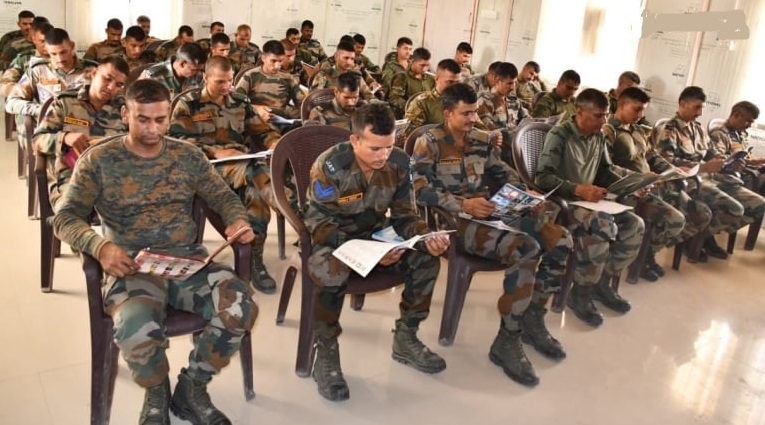 Agneepath Scheme replaced with Sainik Samman Scheme 2024, Defence Minister Rajnath Singh Relaunched Agniveer Scheme
Agneepath Scheme replaced with Sainik Samman Scheme 2024, Defence Minister Rajnath Singh Relaunched Agniveer Scheme
-
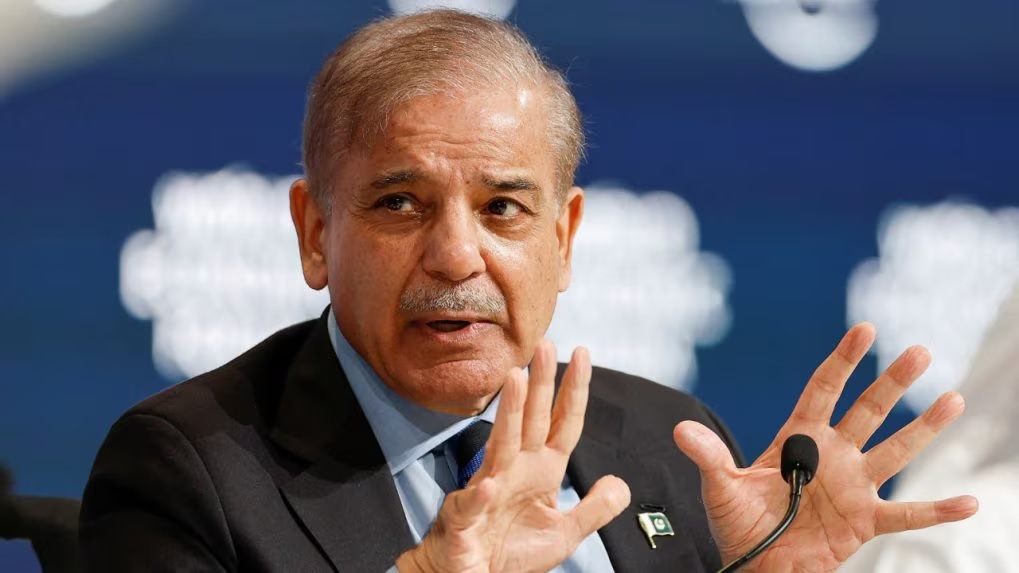 Pakistan Announces 15% Increase in Defence Budget for 2024-25 Amid Economic Crisis
Pakistan Announces 15% Increase in Defence Budget for 2024-25 Amid Economic Crisis
-
 China's Latest DF-31AG ICBM Test: A Strategic Leap in Global Missile Capabilities
China's Latest DF-31AG ICBM Test: A Strategic Leap in Global Missile Capabilities
-
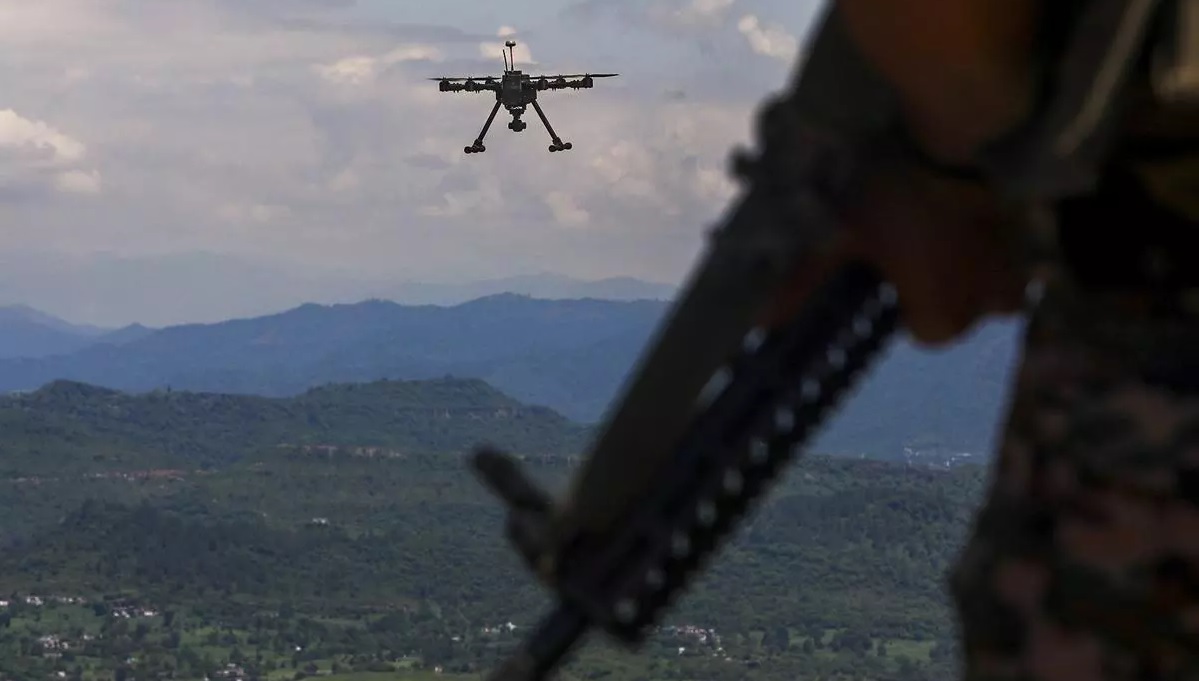 India's Defence Ministry Warns Against Chinese Parts in Military Drones Amid Security Concerns
India's Defence Ministry Warns Against Chinese Parts in Military Drones Amid Security Concerns
-
 China’s Super Radar Detects Mysterious Plasma Bubble Over Giza Pyramids
China’s Super Radar Detects Mysterious Plasma Bubble Over Giza Pyramids
-
 India's Indigenous Kaveri Engine Program with New Focus on Thrust and Performance
India's Indigenous Kaveri Engine Program with New Focus on Thrust and Performance
-
 Russian Scientists Develops Cancer Vaccine, will Distribute Free from 2025 in Russia
Russian Scientists Develops Cancer Vaccine, will Distribute Free from 2025 in Russia
-
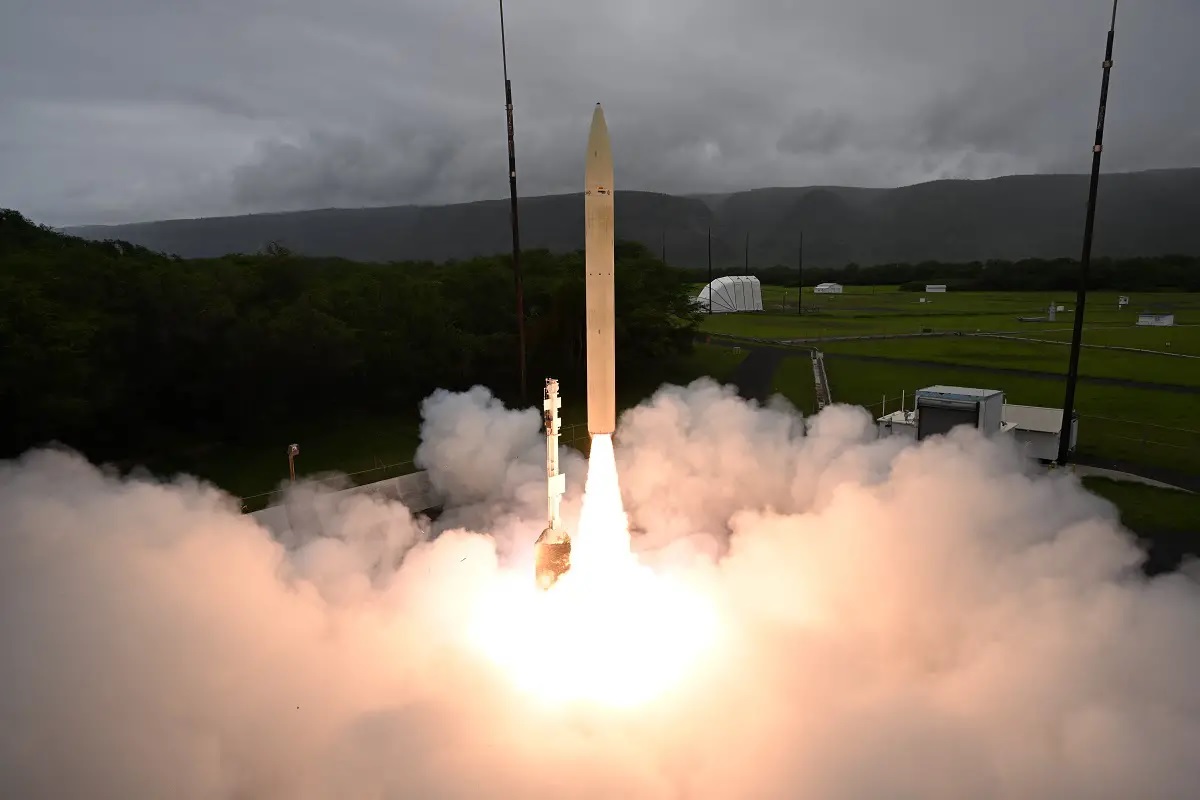 Successful Hypersonic Missile Test by U.S. Department of Defense
Successful Hypersonic Missile Test by U.S. Department of Defense
Top Trending in 4 Days
-
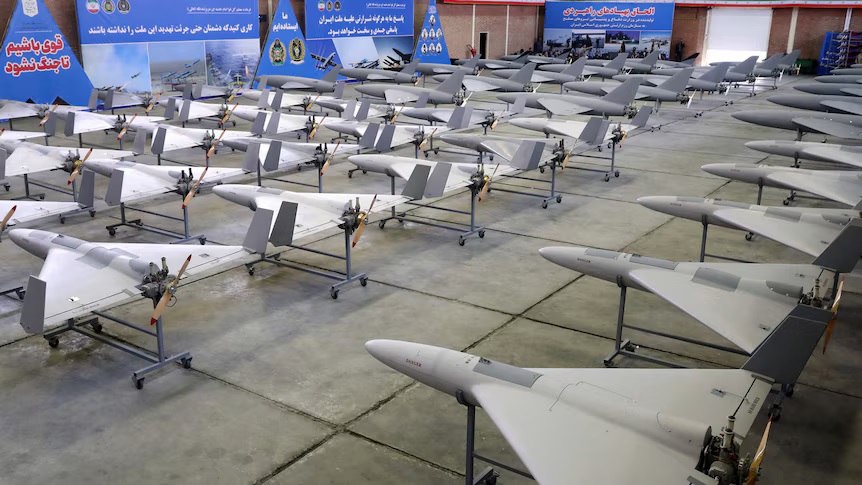 China’s Massive Kamikaze Drone Order Signals Strategic Military Expansion
China’s Massive Kamikaze Drone Order Signals Strategic Military Expansion
-
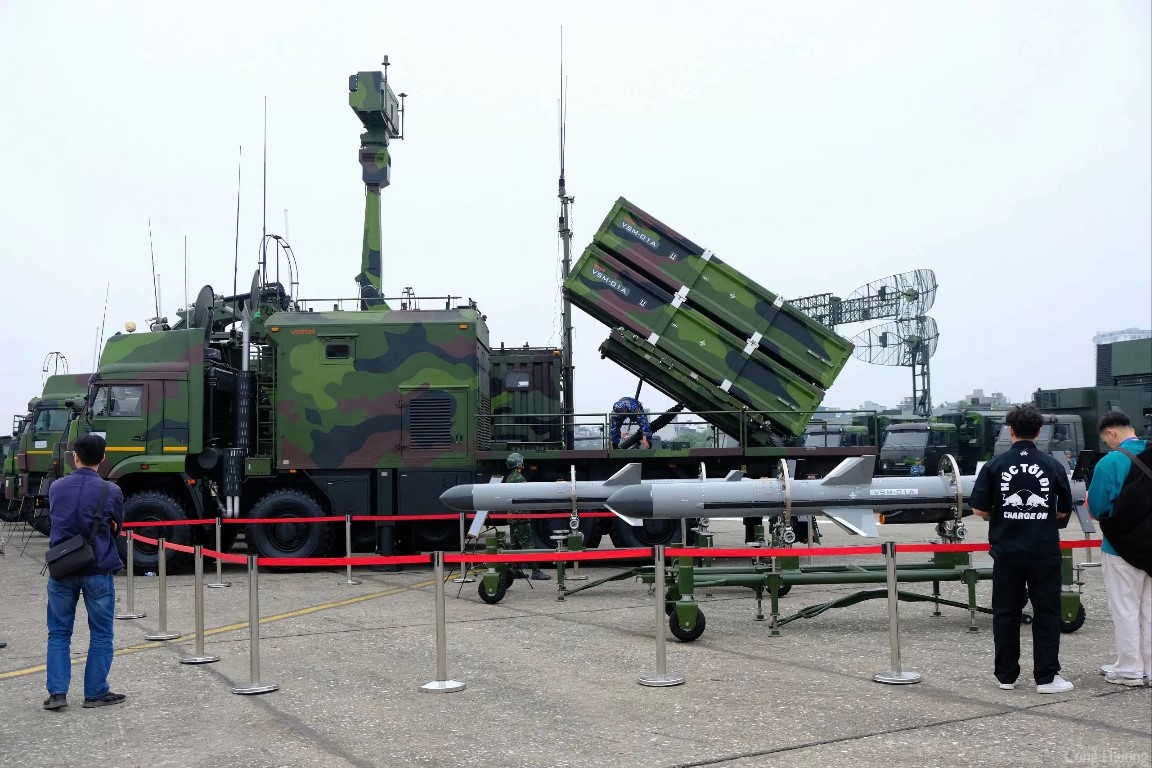 Vietnam Unveils VCS-01 Coastal Defense System: A Indigenous Missile Technology
Vietnam Unveils VCS-01 Coastal Defense System: A Indigenous Missile Technology
-
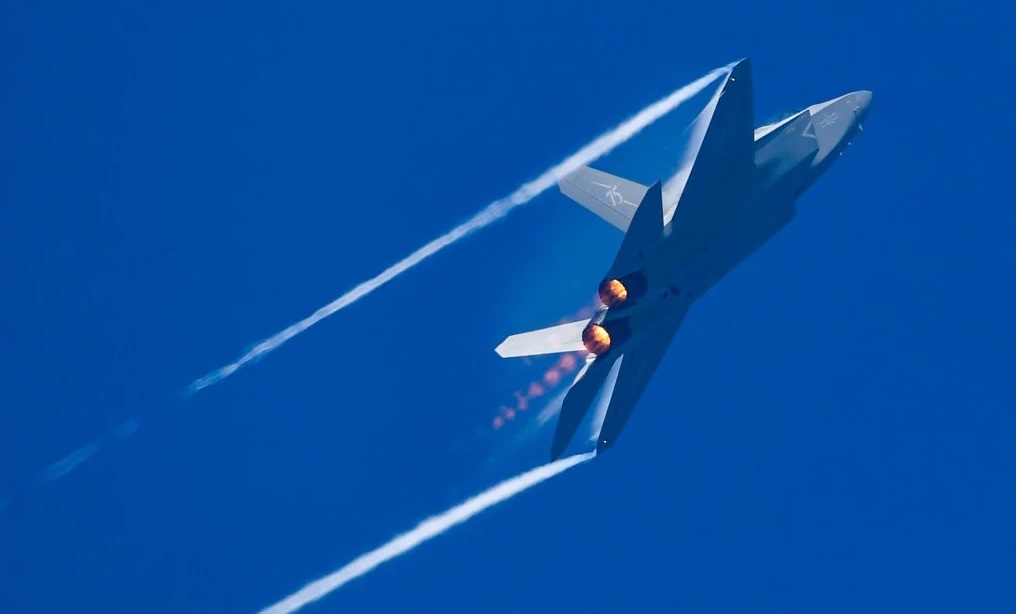 Pakistan Plans to Acquire 40 Chinese J-35 Stealth Fighters Amid Economic Strain
Pakistan Plans to Acquire 40 Chinese J-35 Stealth Fighters Amid Economic Strain
-
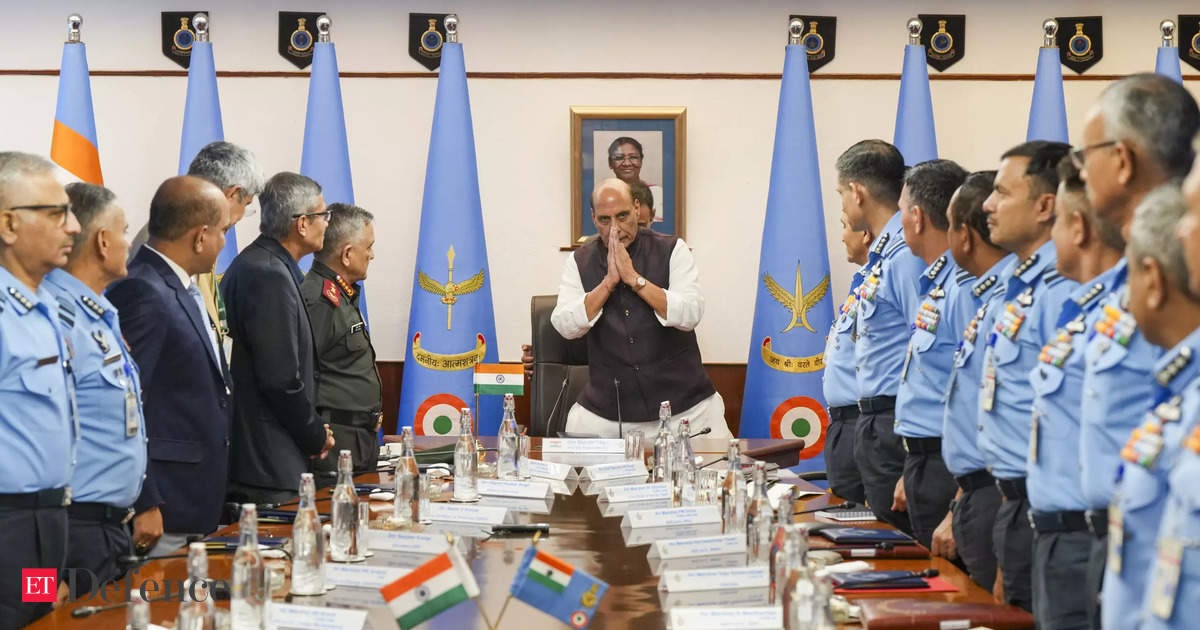 India Forms High-Level Committee to Bolster Indian Air Force’s Capability Amid Regional Challenges
India Forms High-Level Committee to Bolster Indian Air Force’s Capability Amid Regional Challenges
-
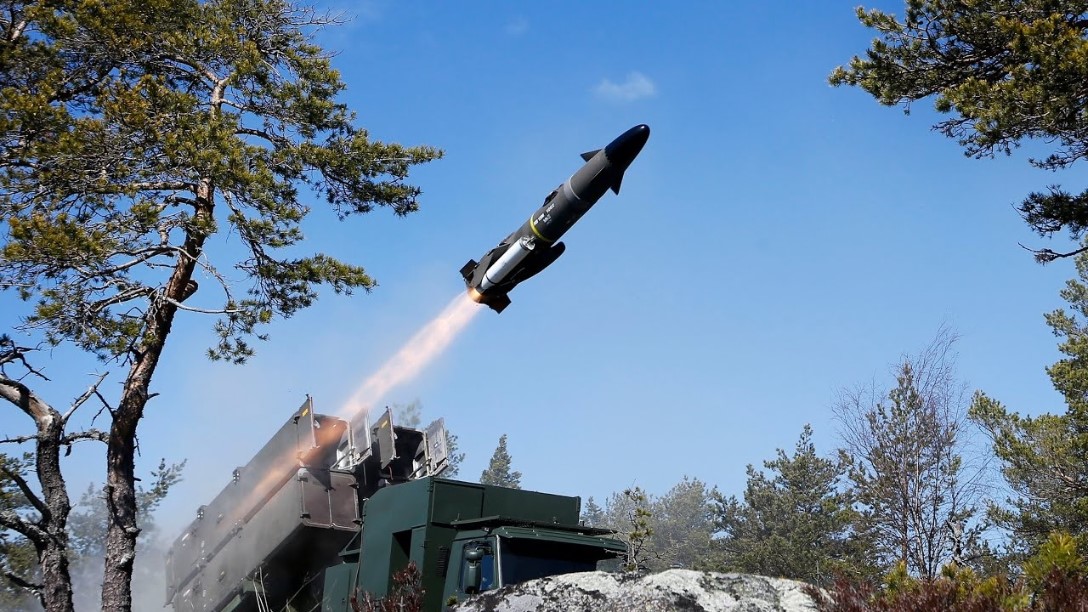 Saab Secures SEK 800 Million Contract to Upgrade Sweden’s Coastal Defence with RBS15 Mk3 Missiles
Saab Secures SEK 800 Million Contract to Upgrade Sweden’s Coastal Defence with RBS15 Mk3 Missiles
-
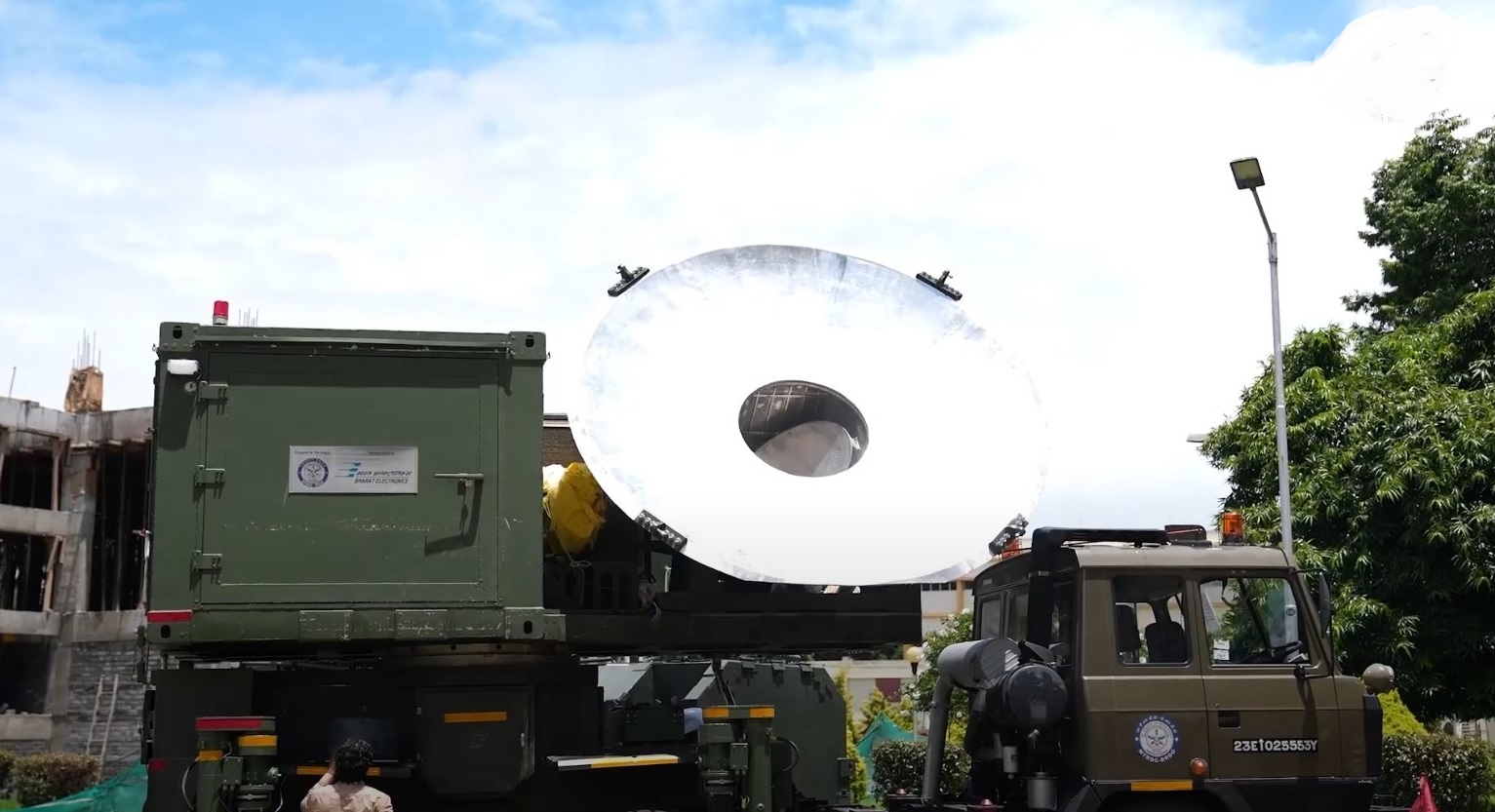 India’s DRDO Unveils High Power Microwave System
India’s DRDO Unveils High Power Microwave System
-
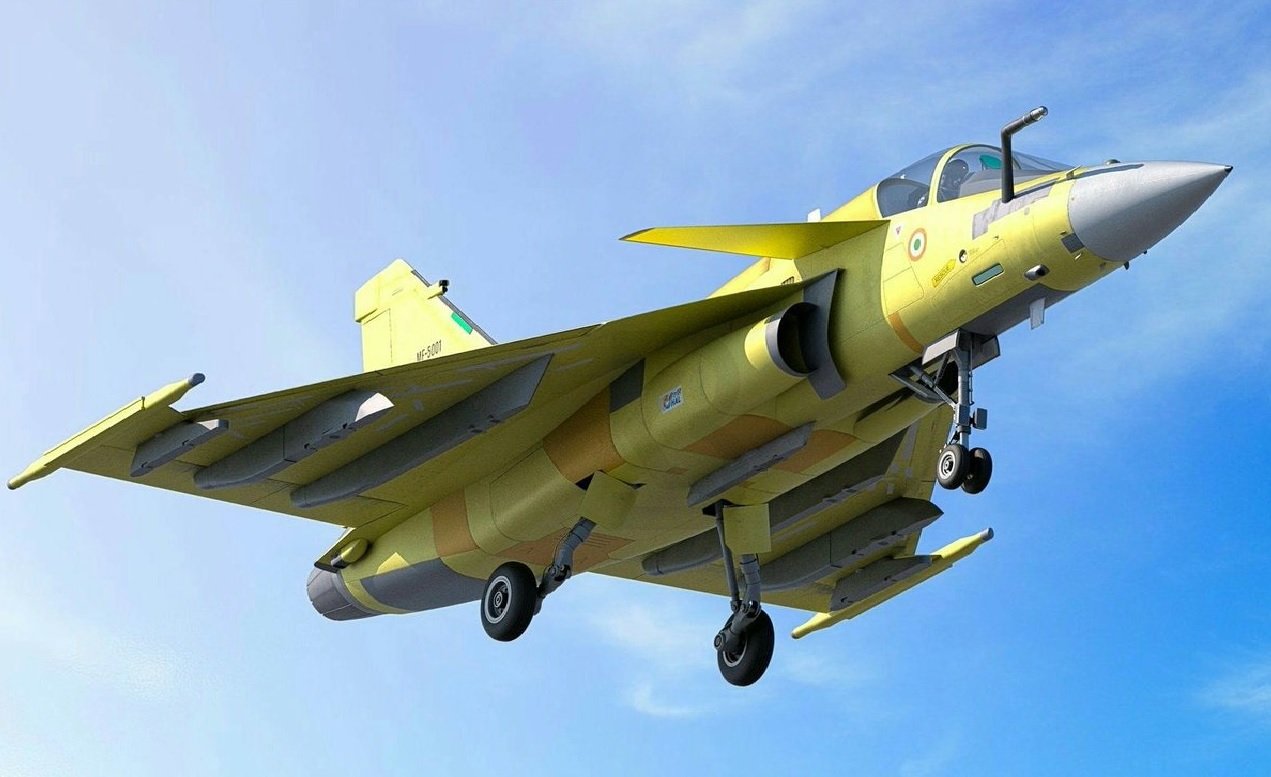 MIDHANI Delivers Indigenous Titanium & Superalloys for Tejas Mk2 Jet's Airframe and Structural Parts Manufacturing
MIDHANI Delivers Indigenous Titanium & Superalloys for Tejas Mk2 Jet's Airframe and Structural Parts Manufacturing
-
 U.S. Coast Guard Advances Construction of First Polar Security Cutter in Over 50 Years
U.S. Coast Guard Advances Construction of First Polar Security Cutter in Over 50 Years

